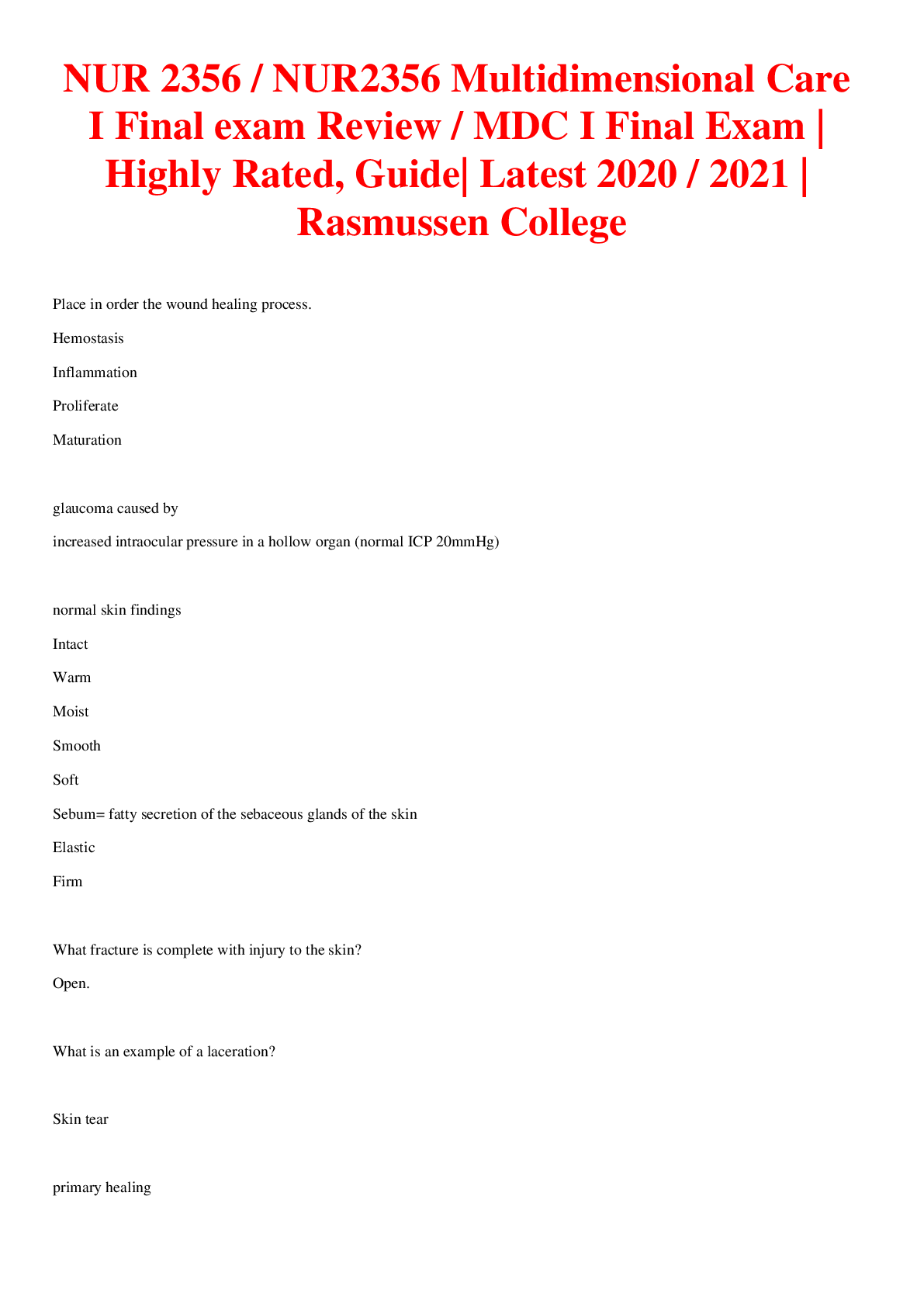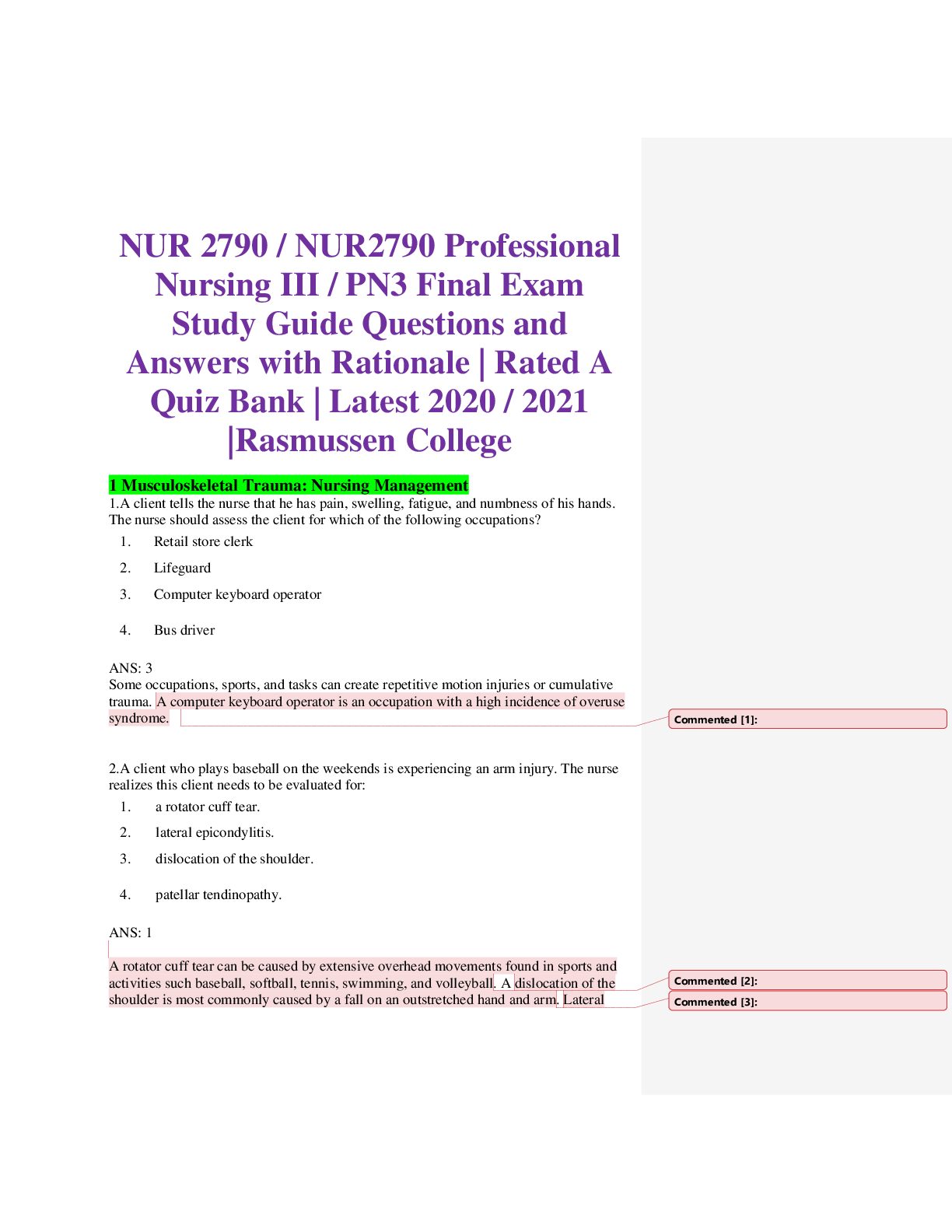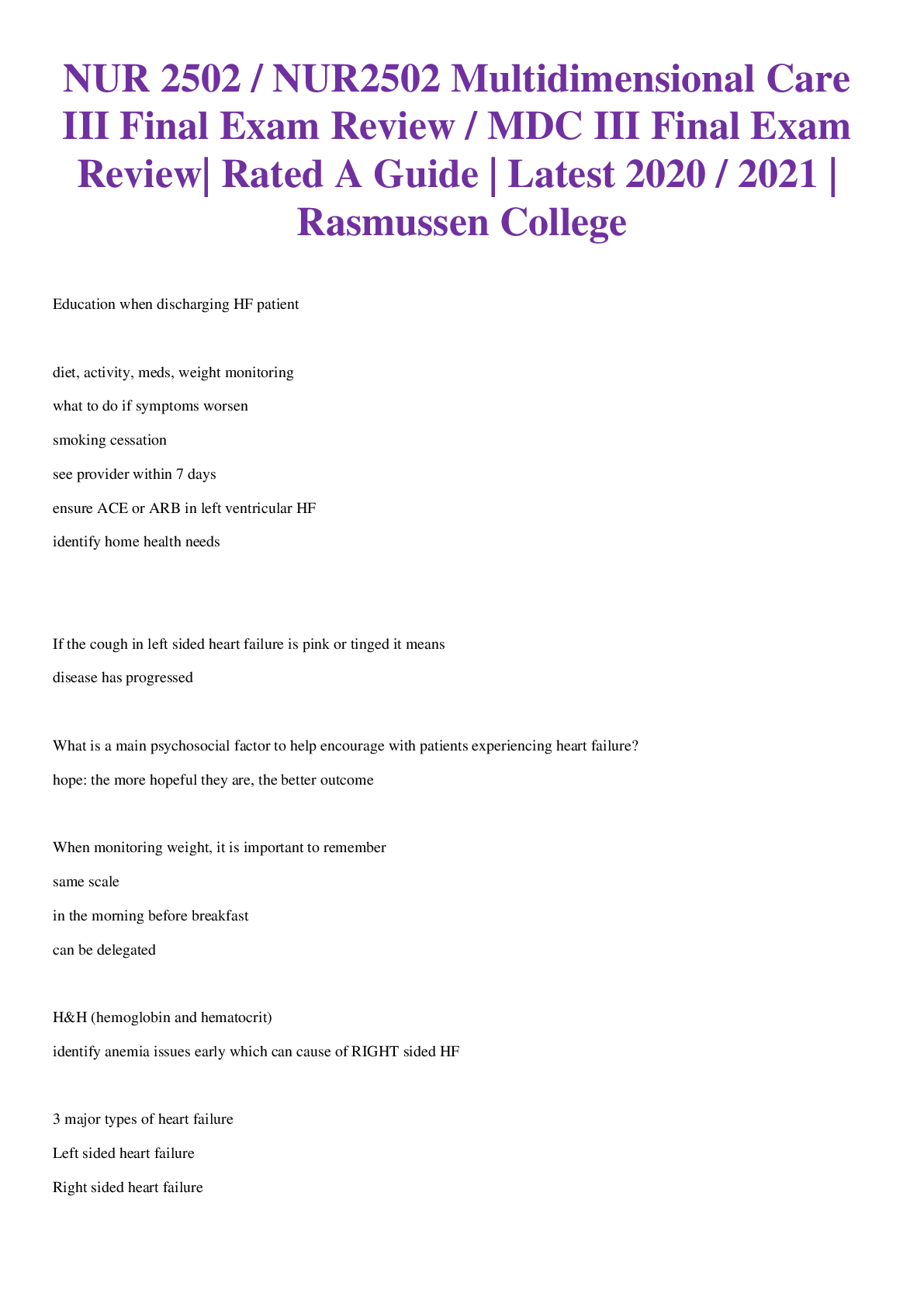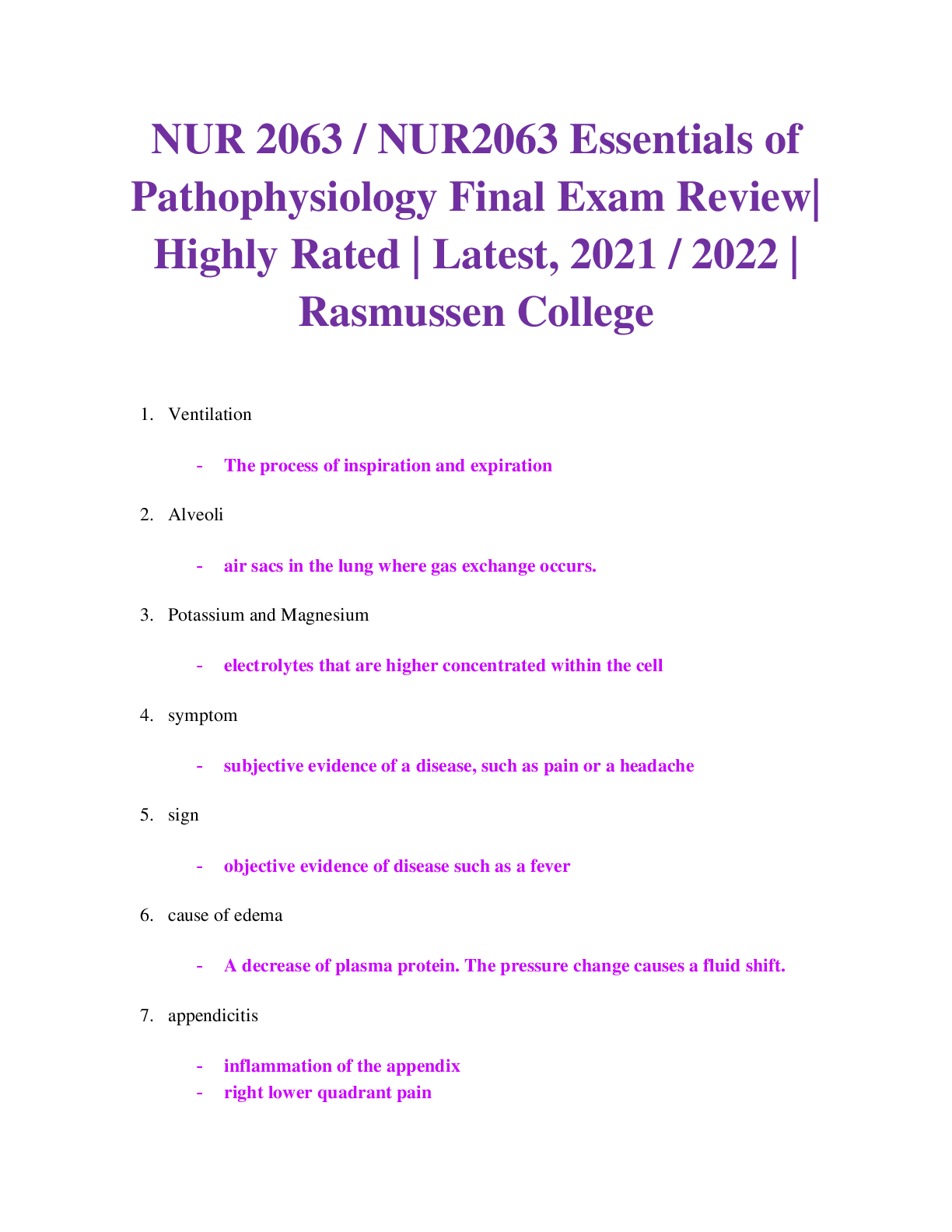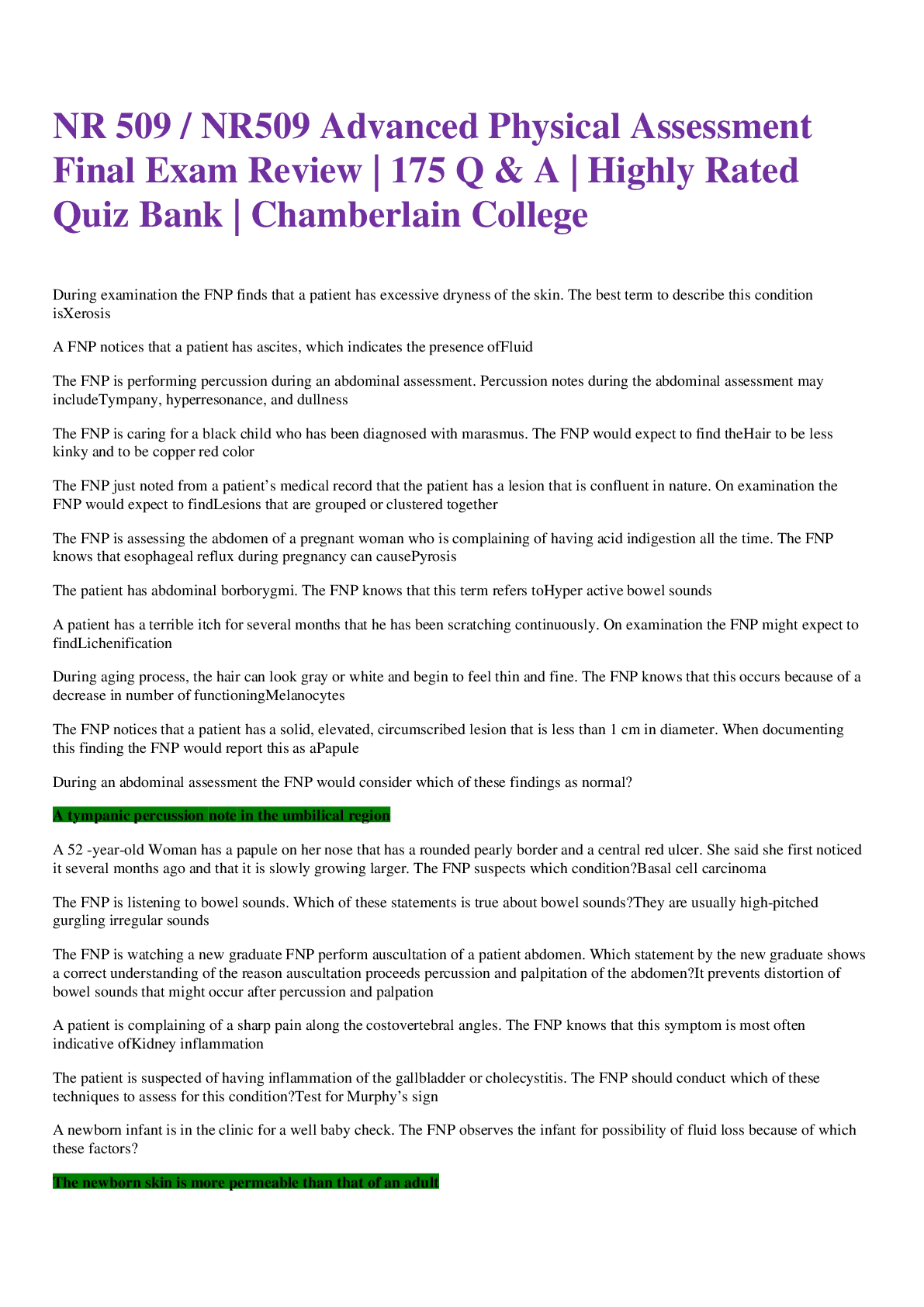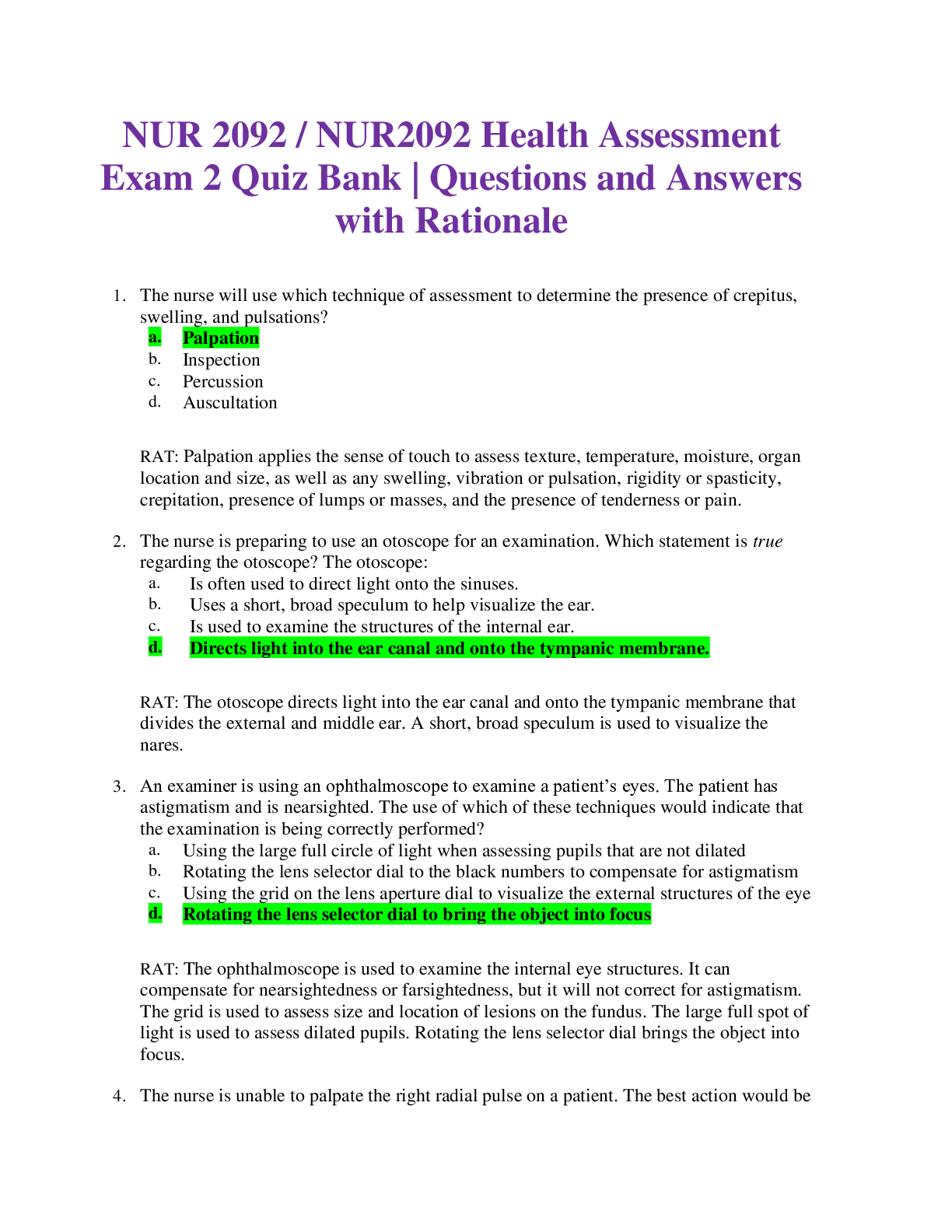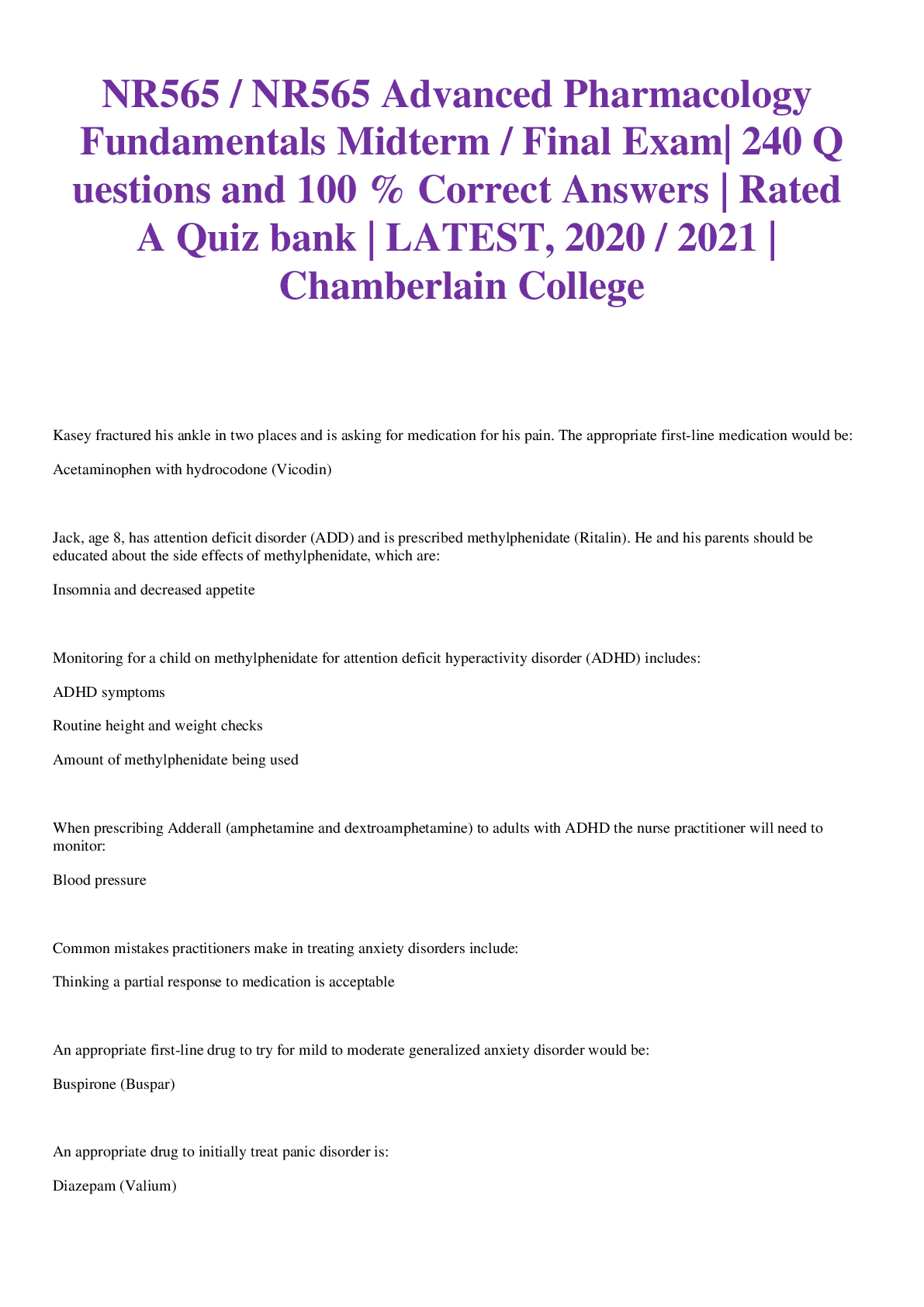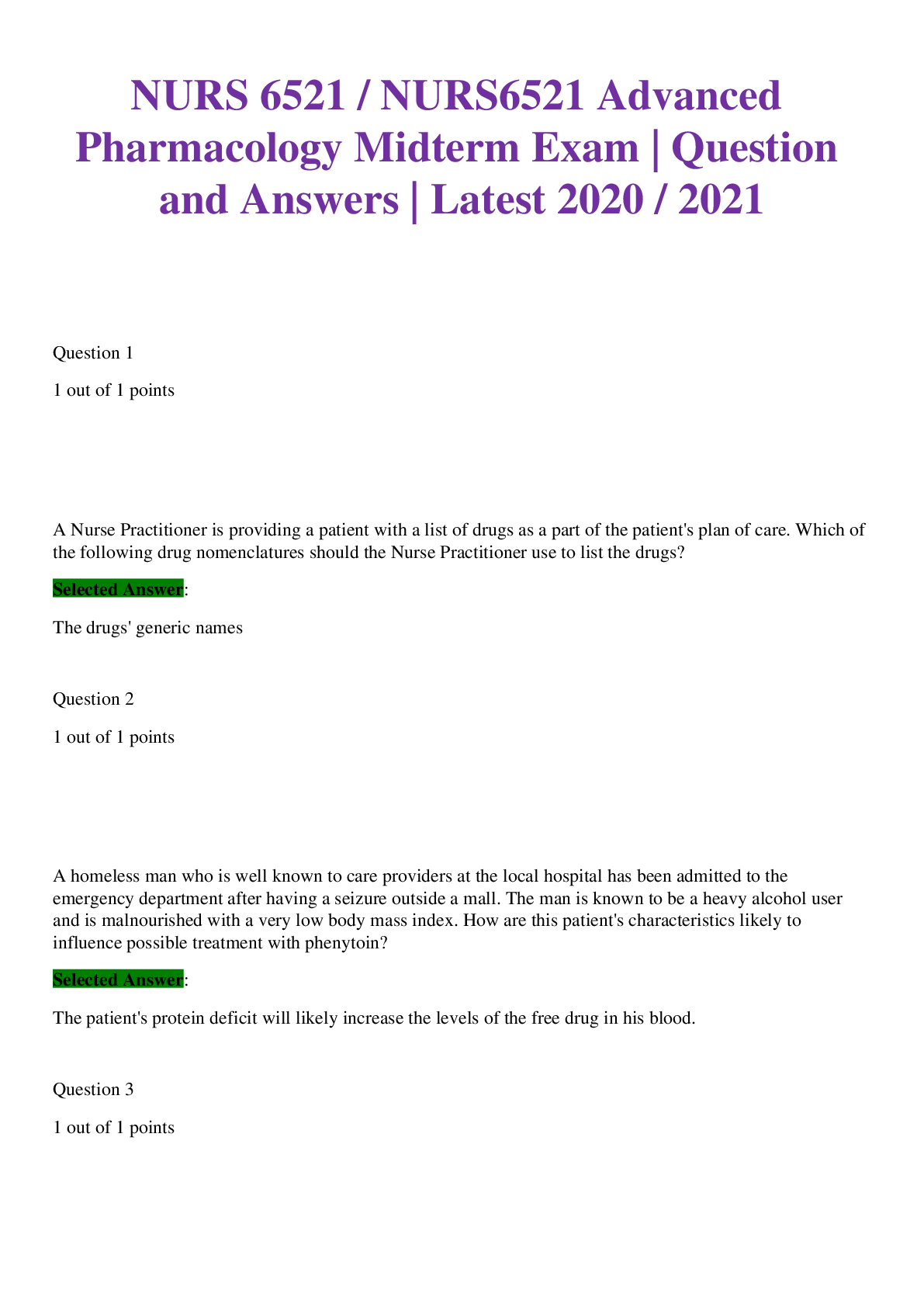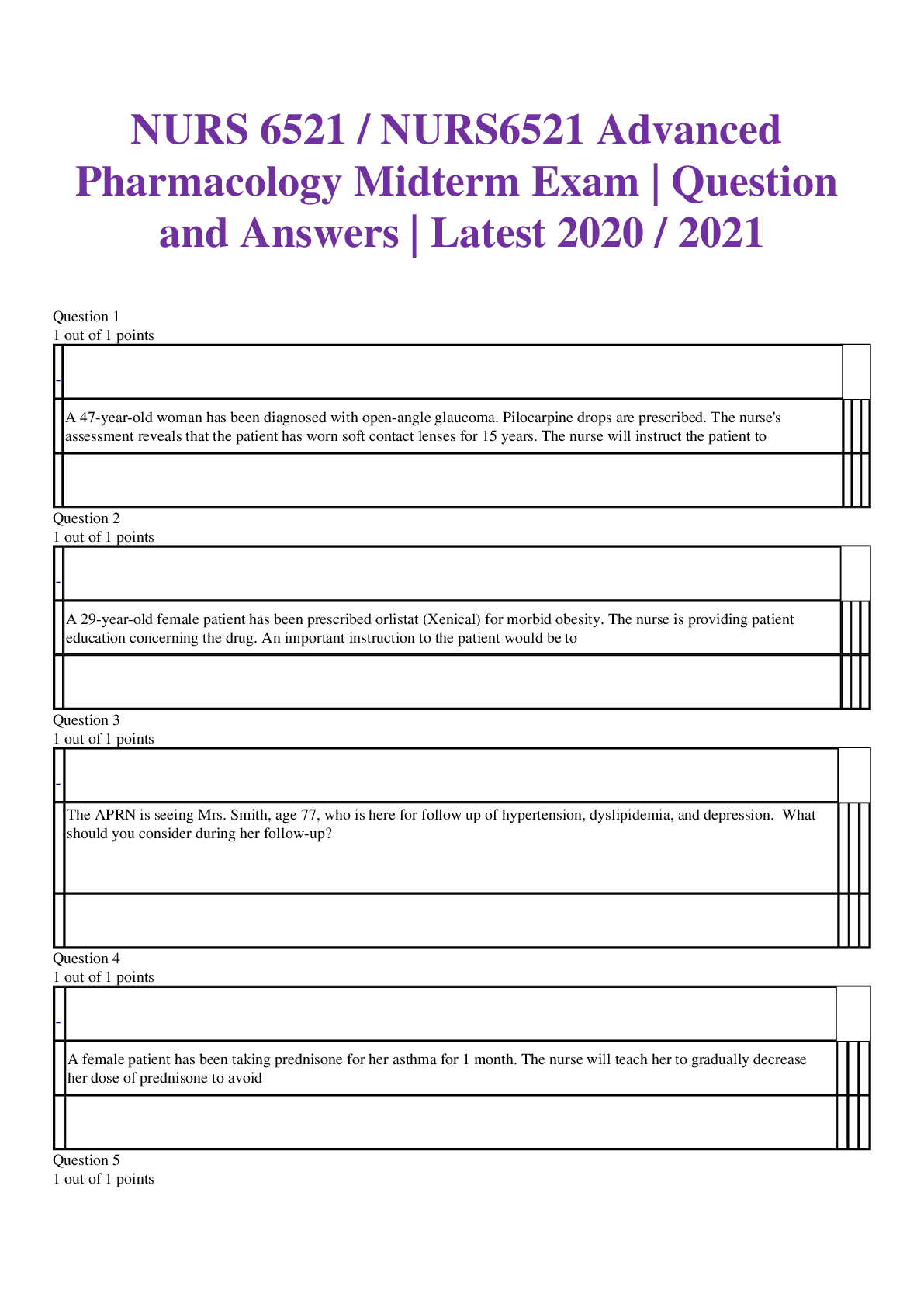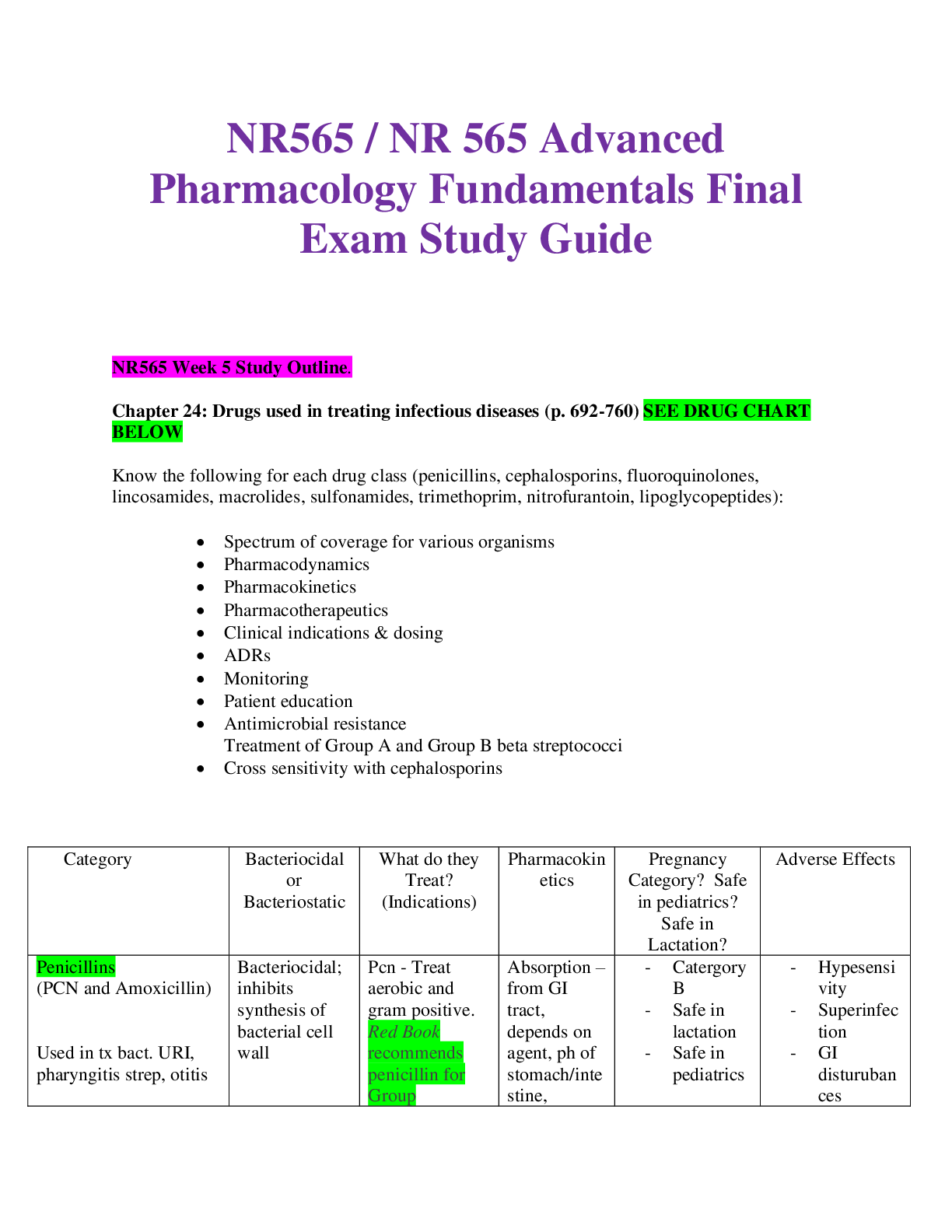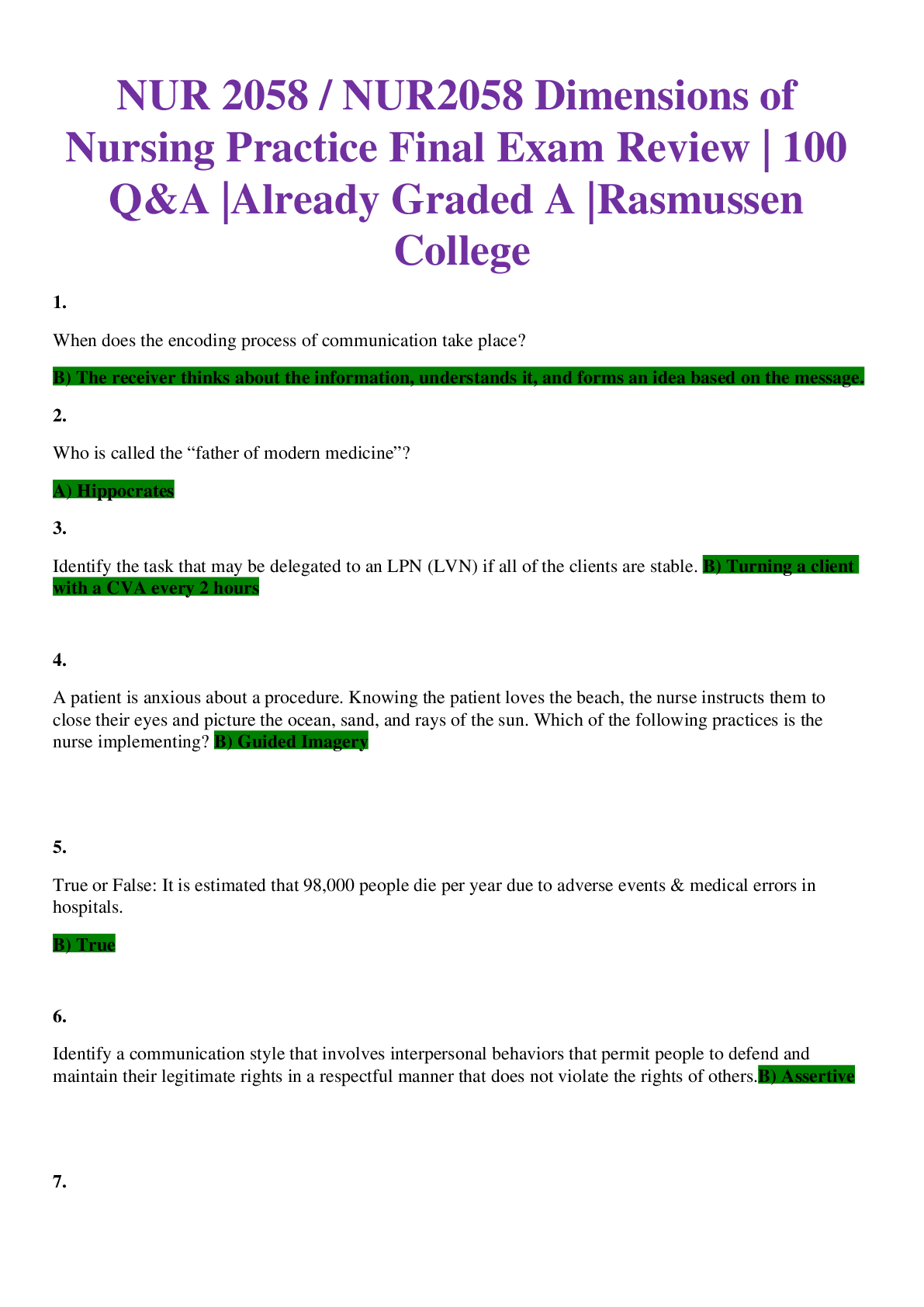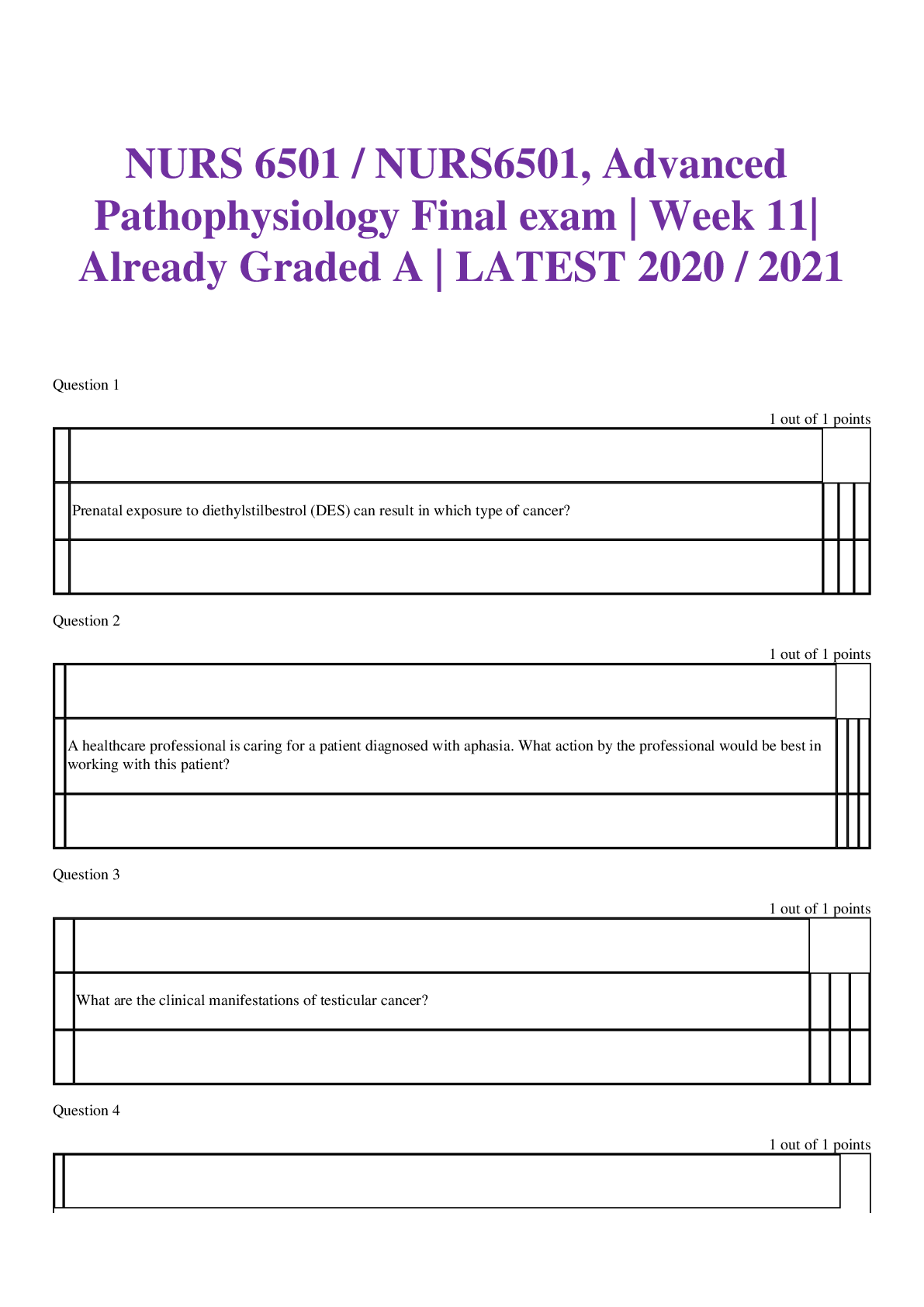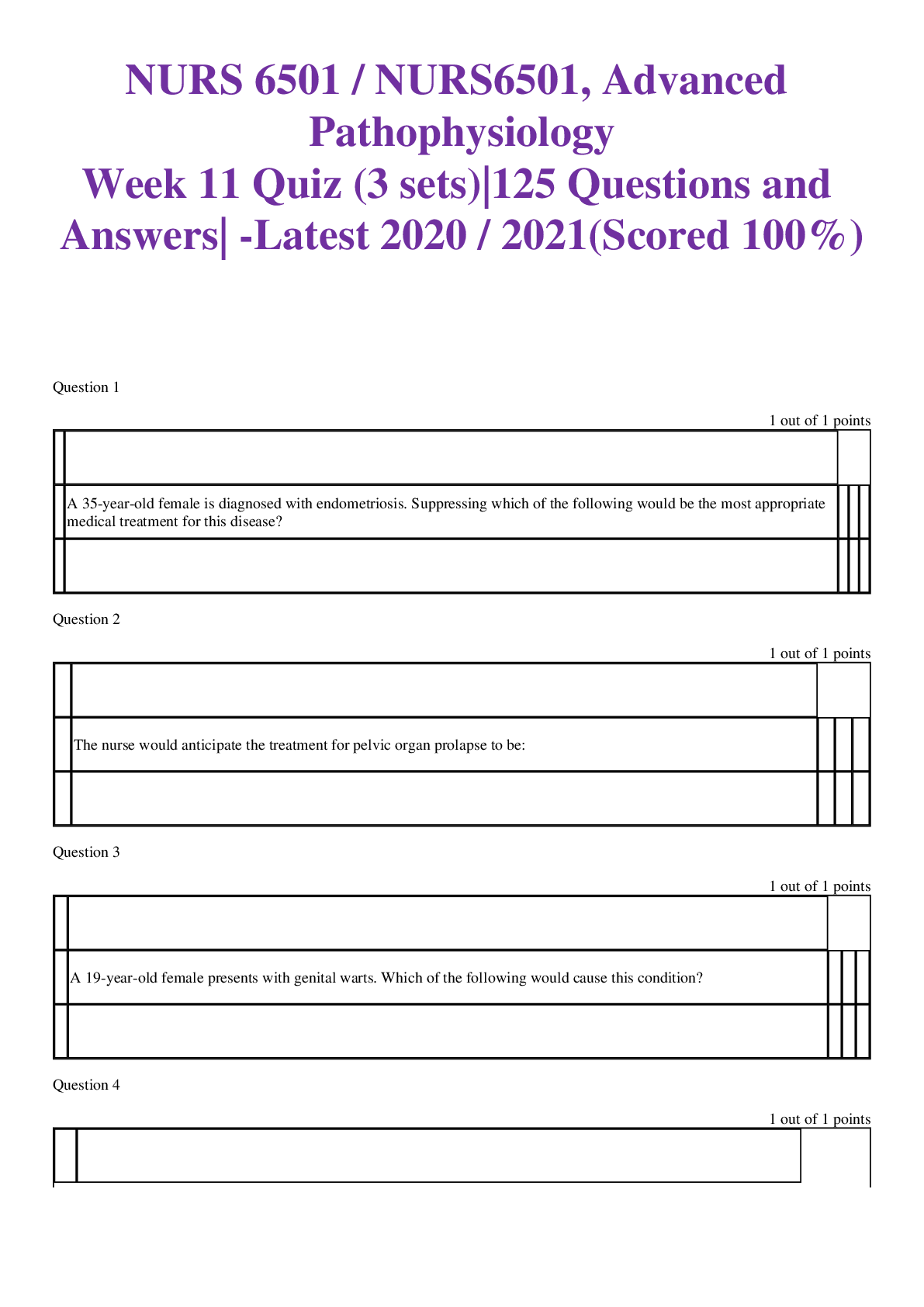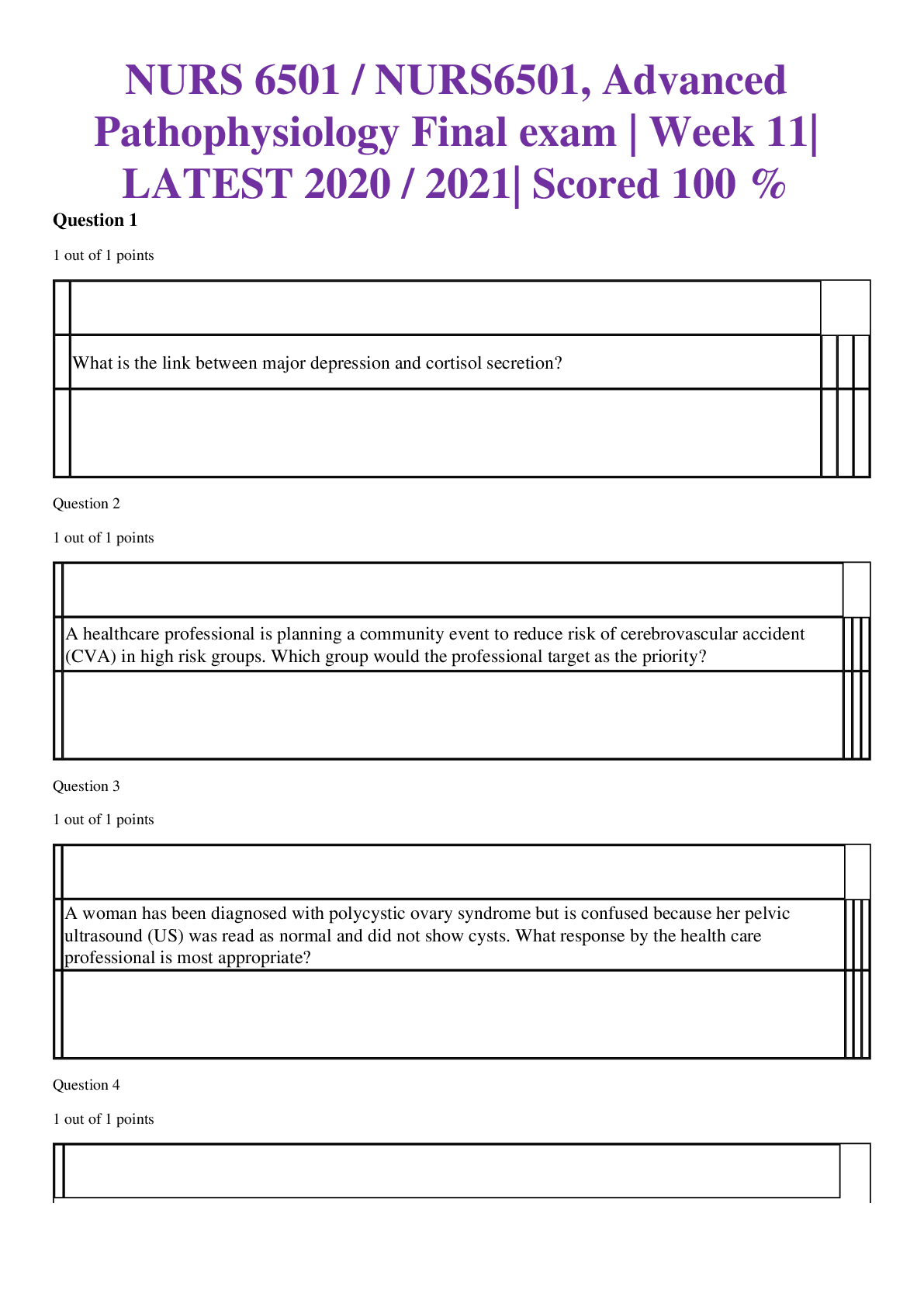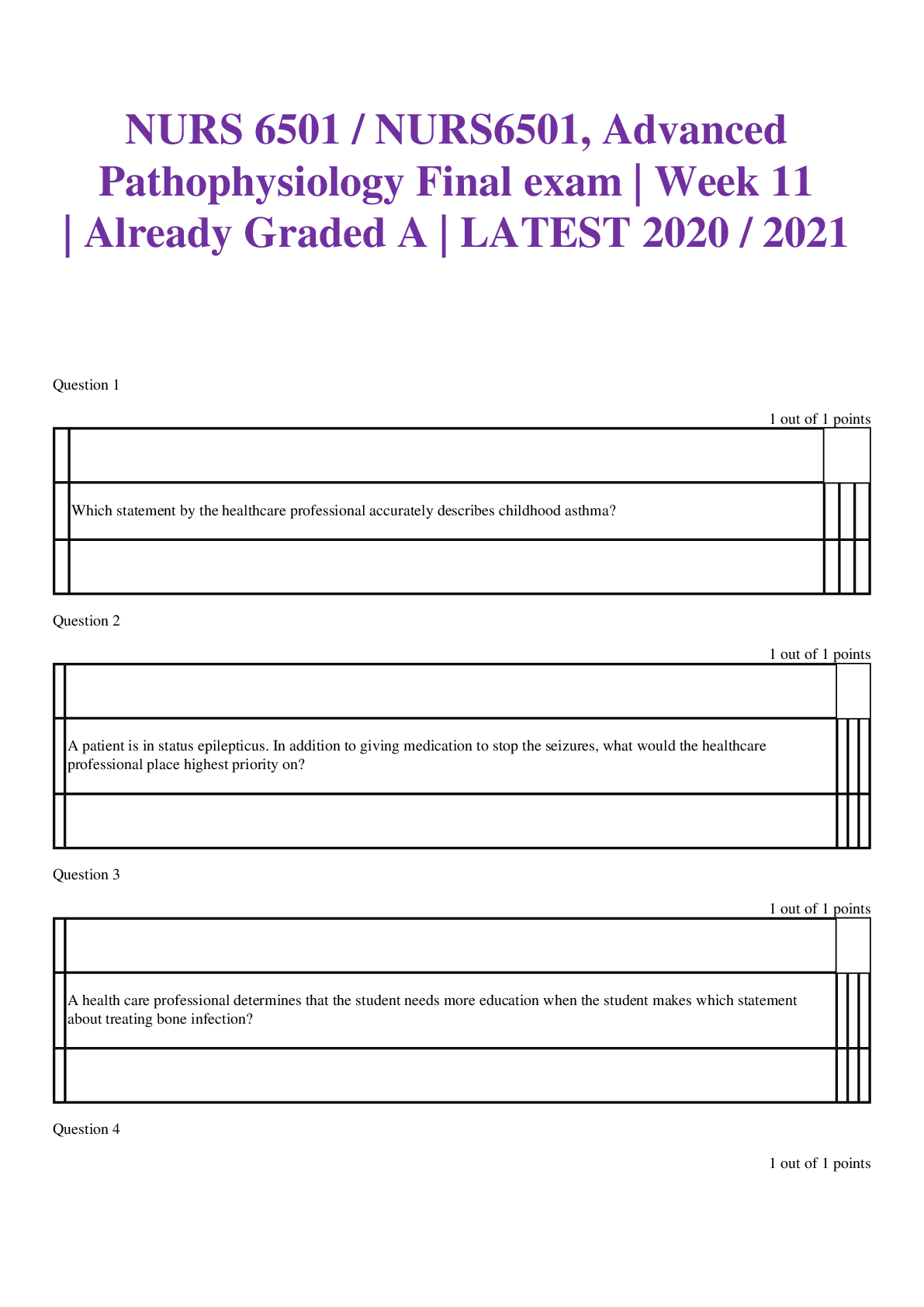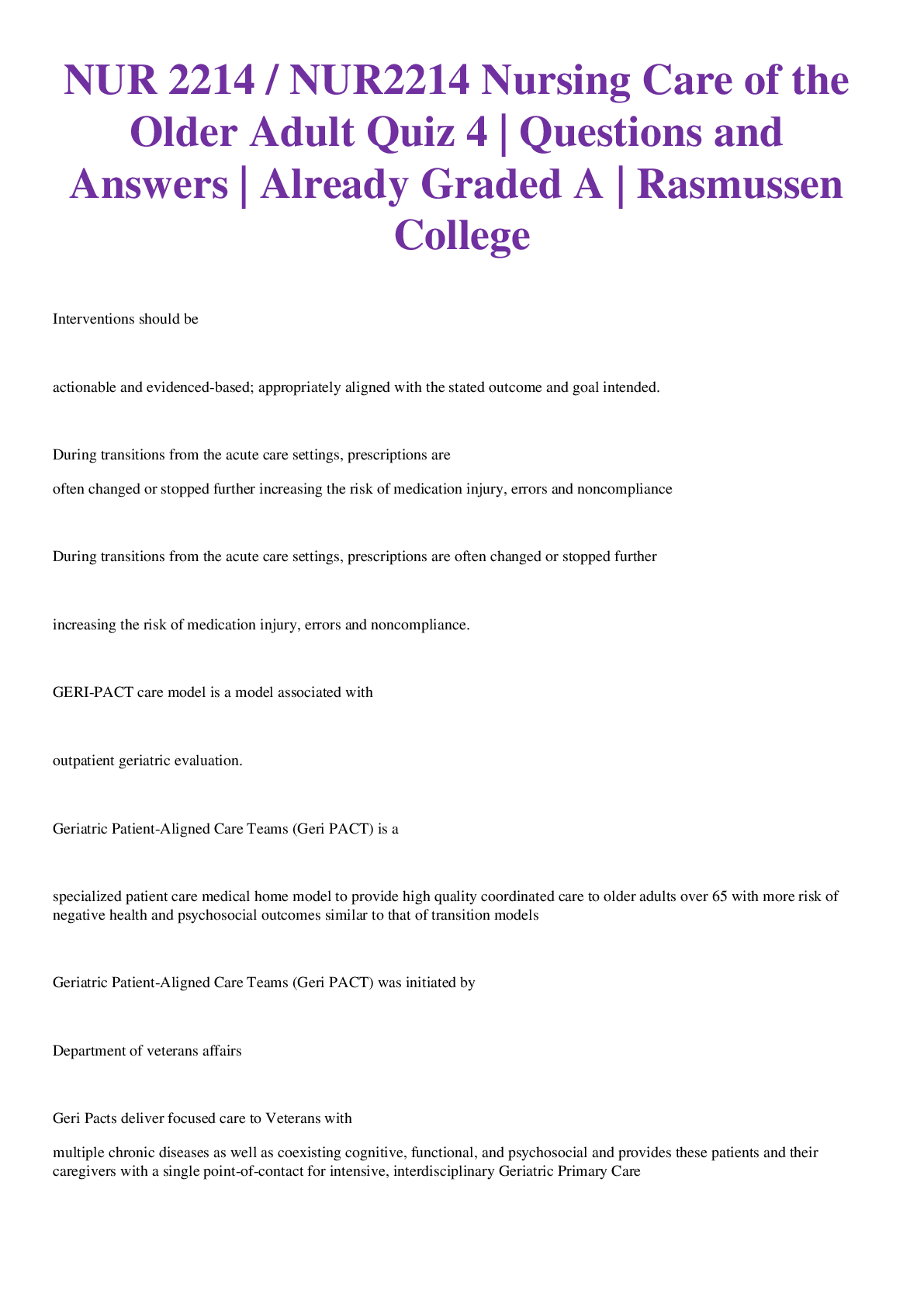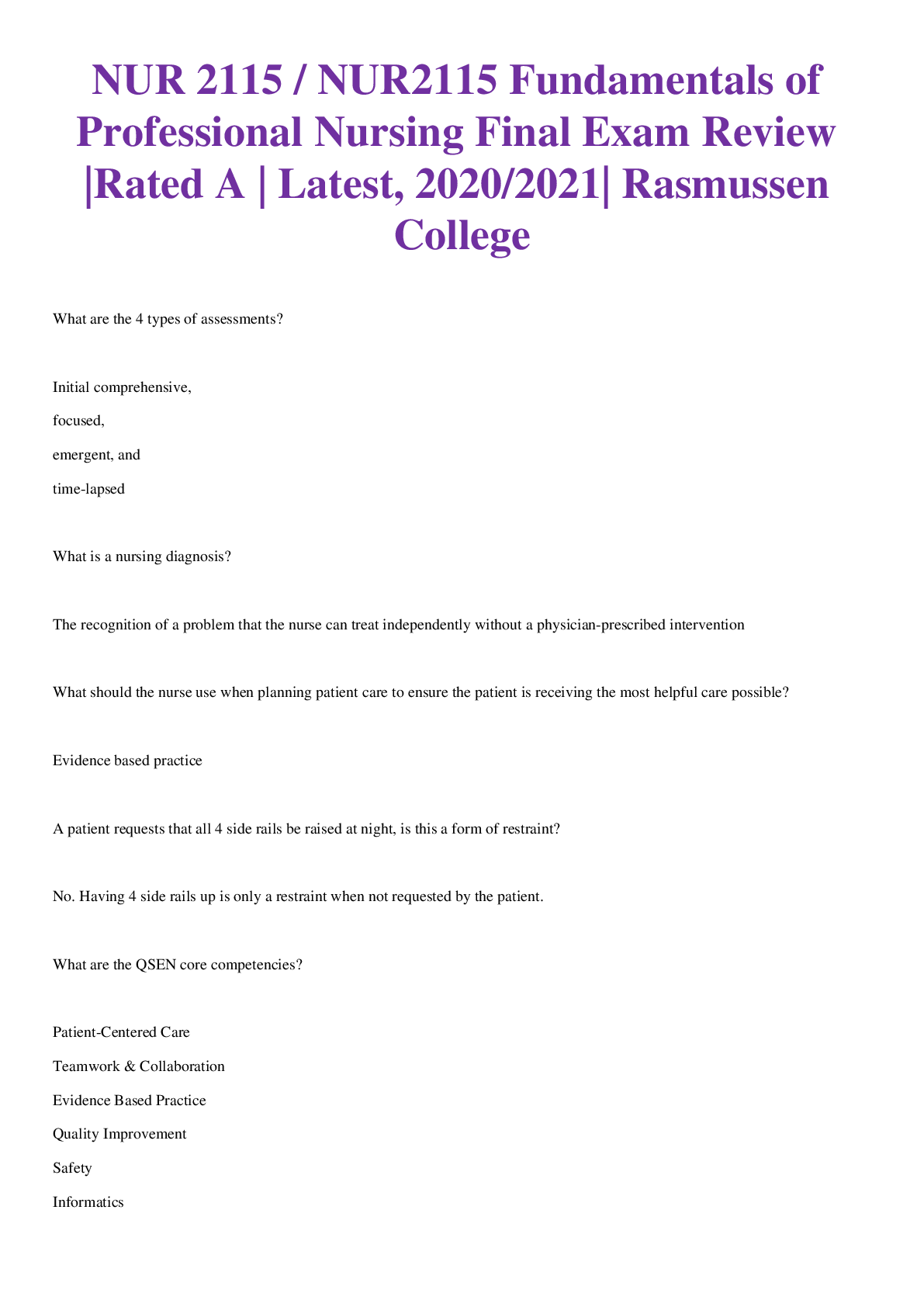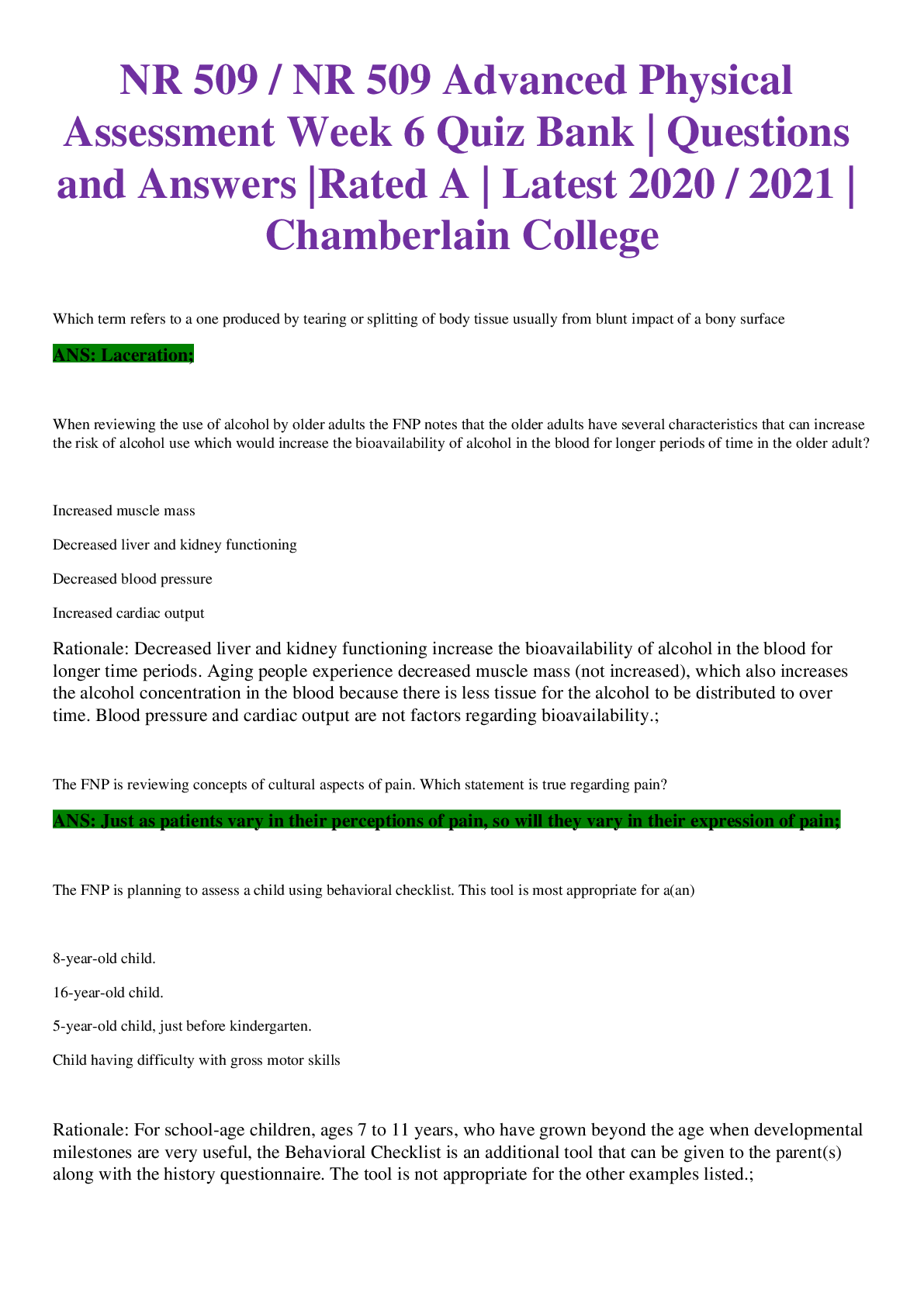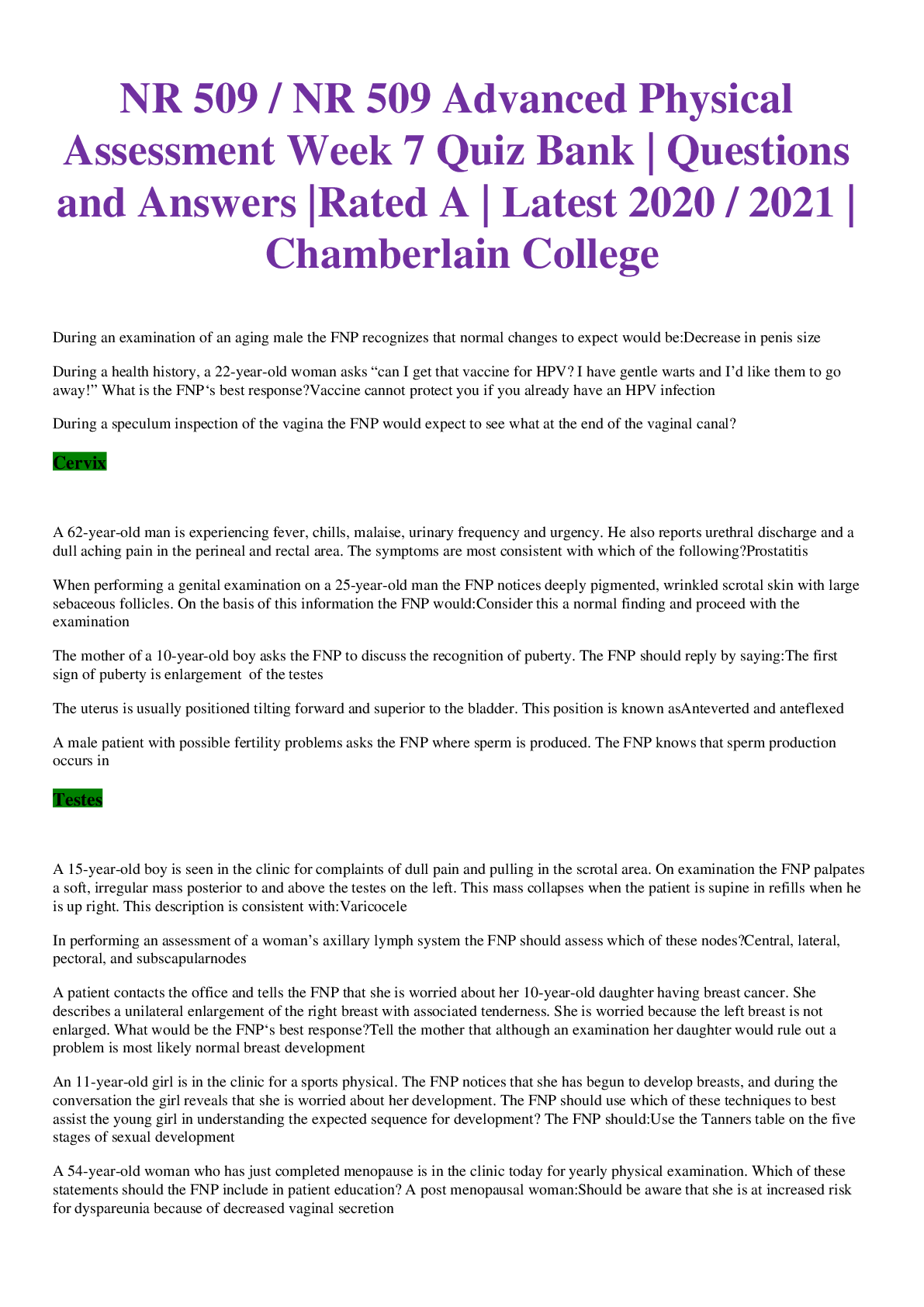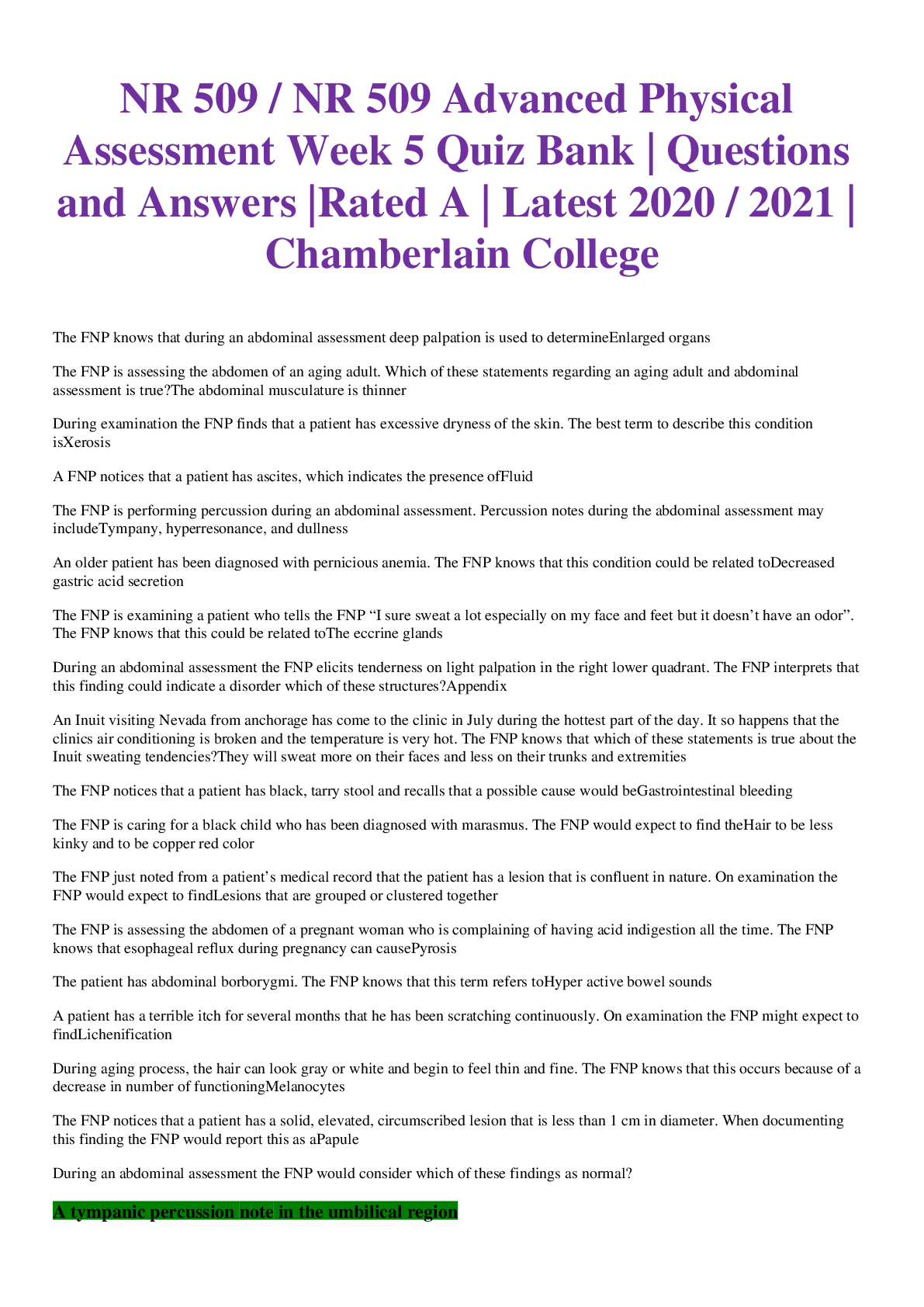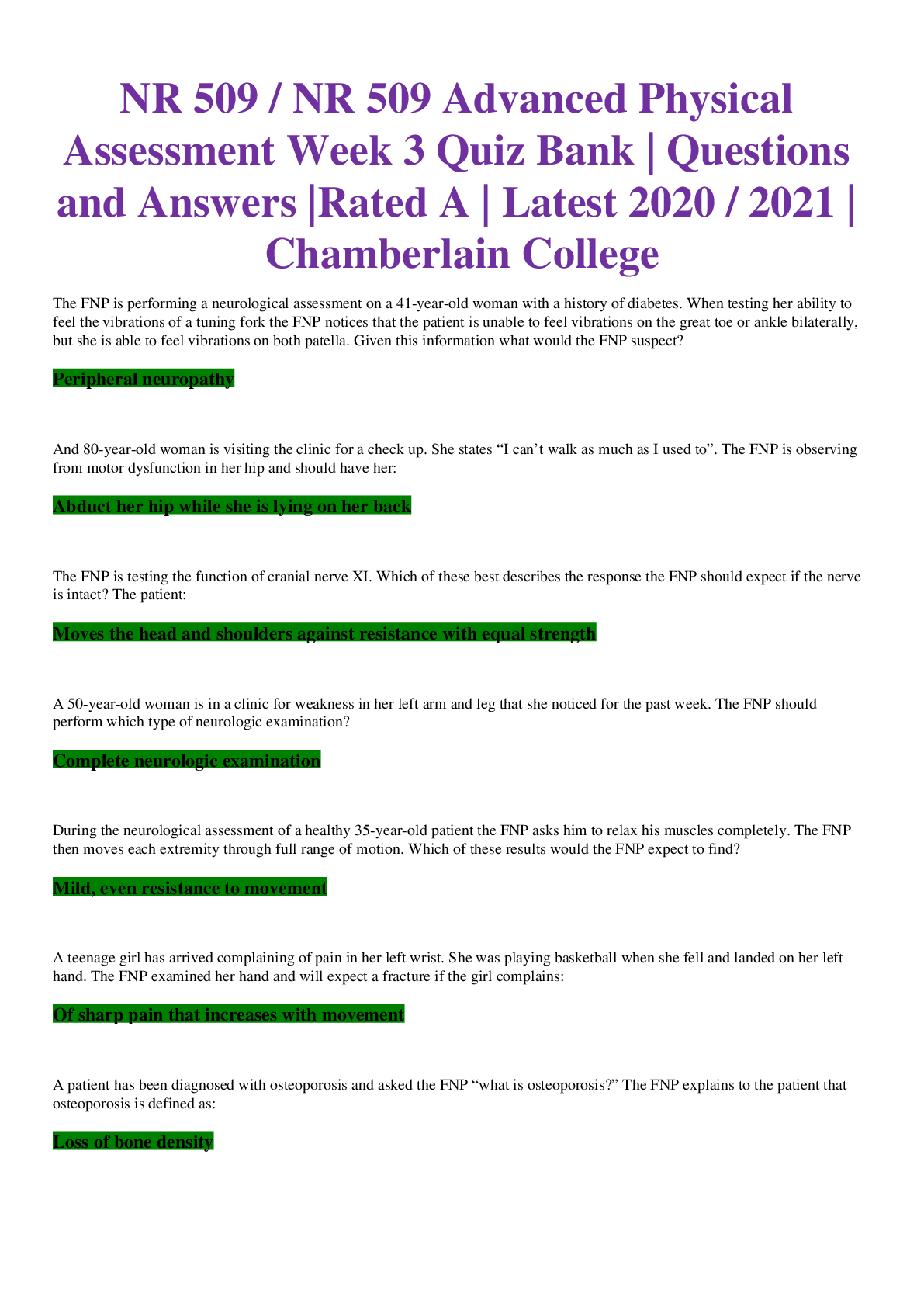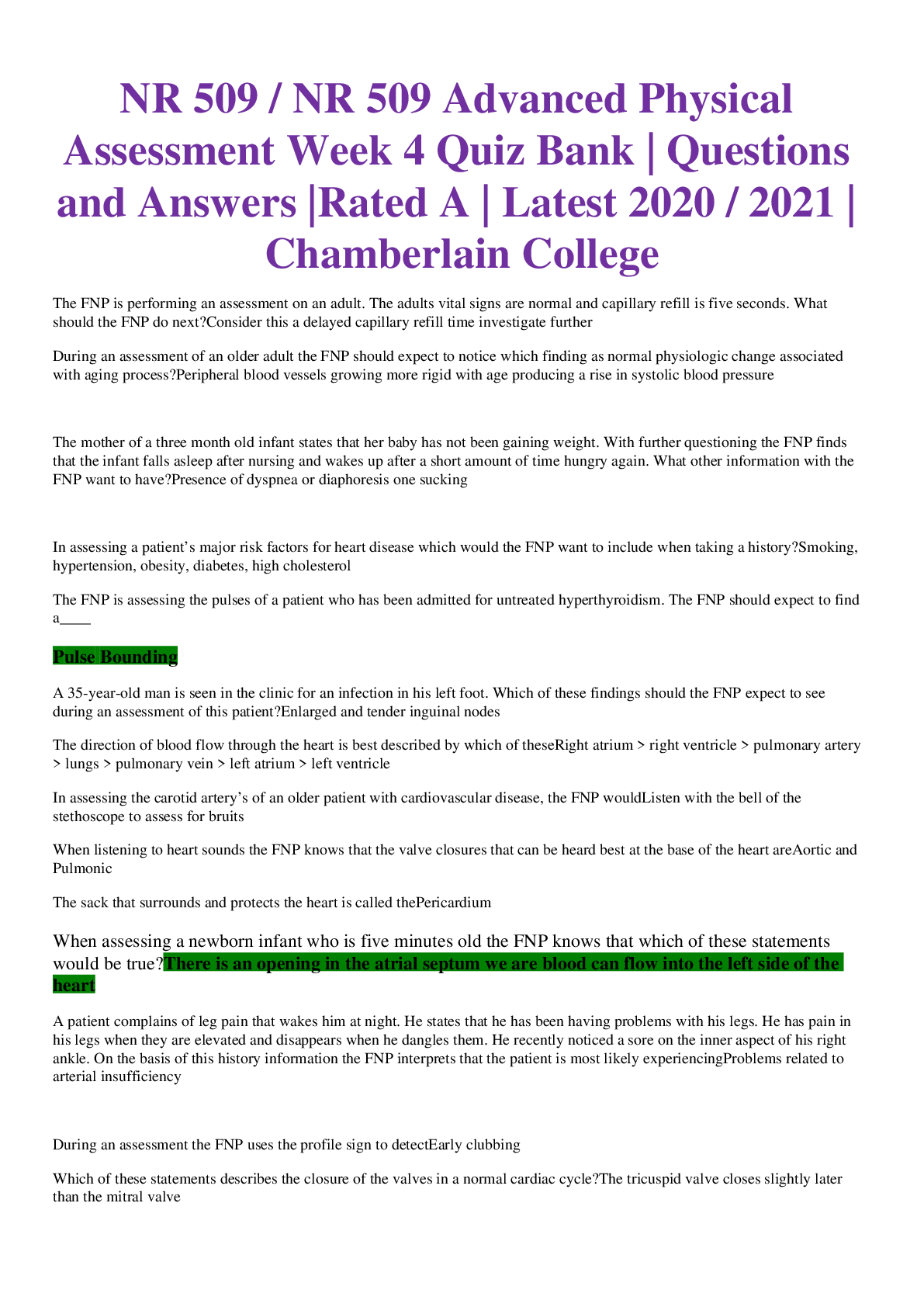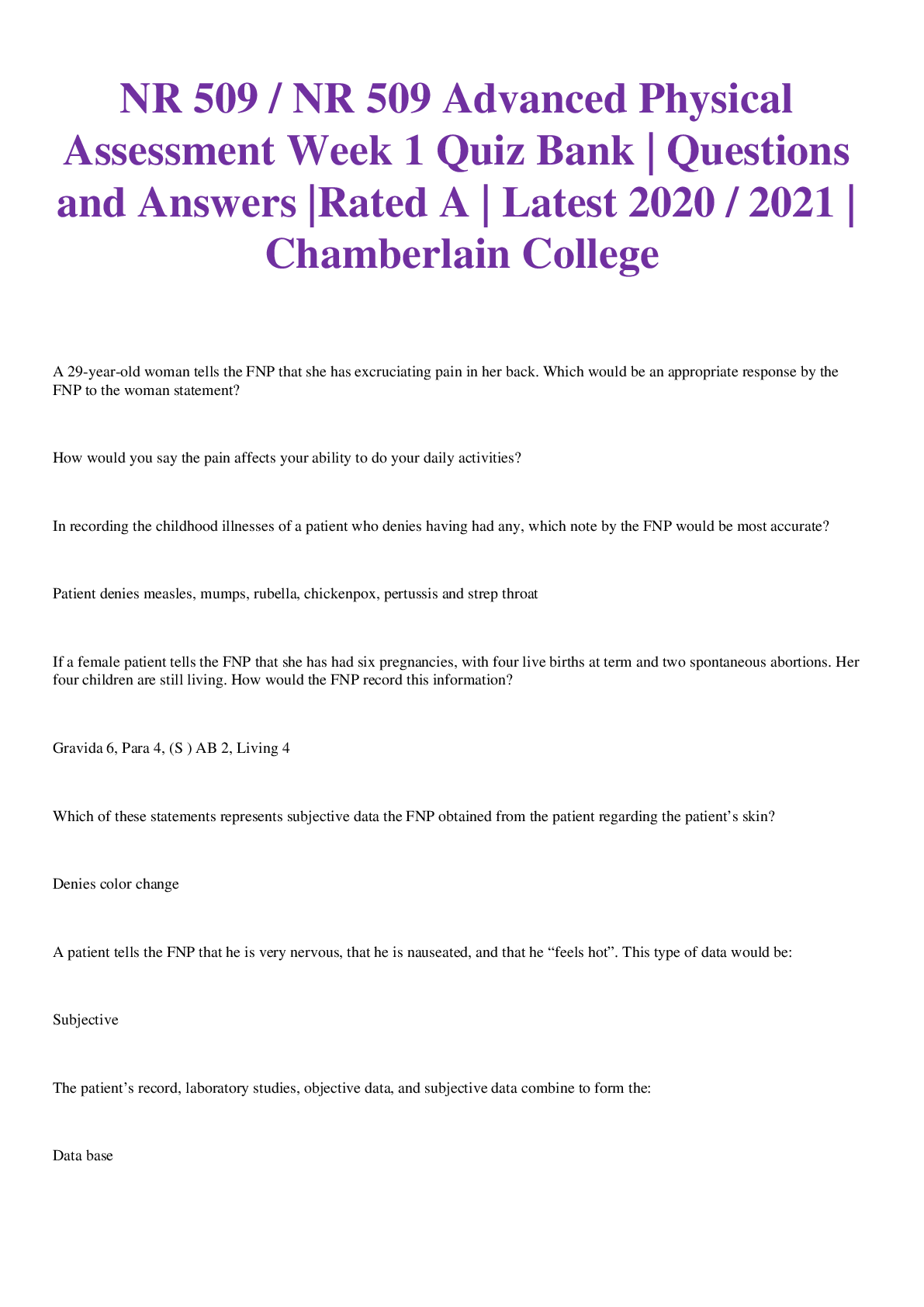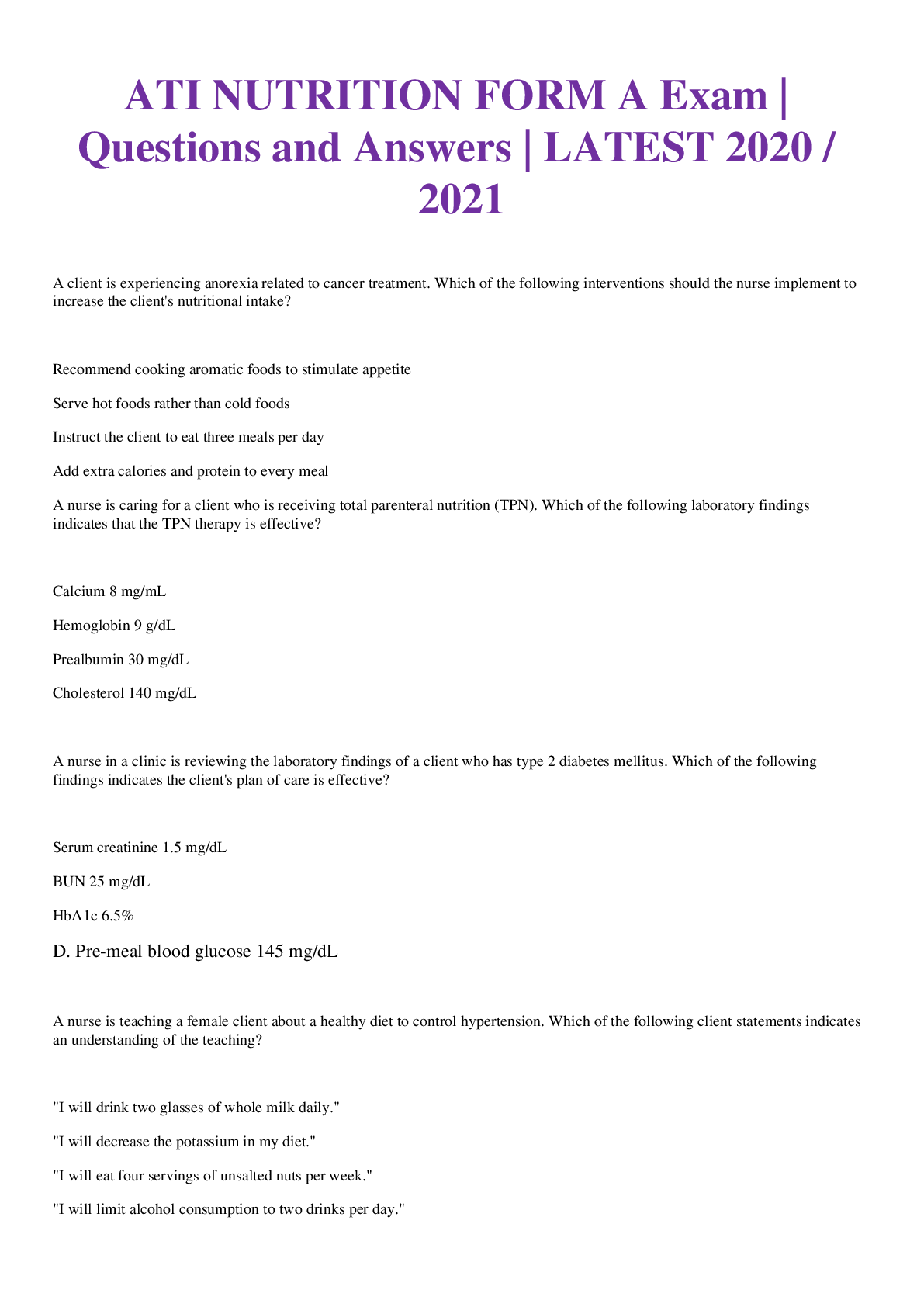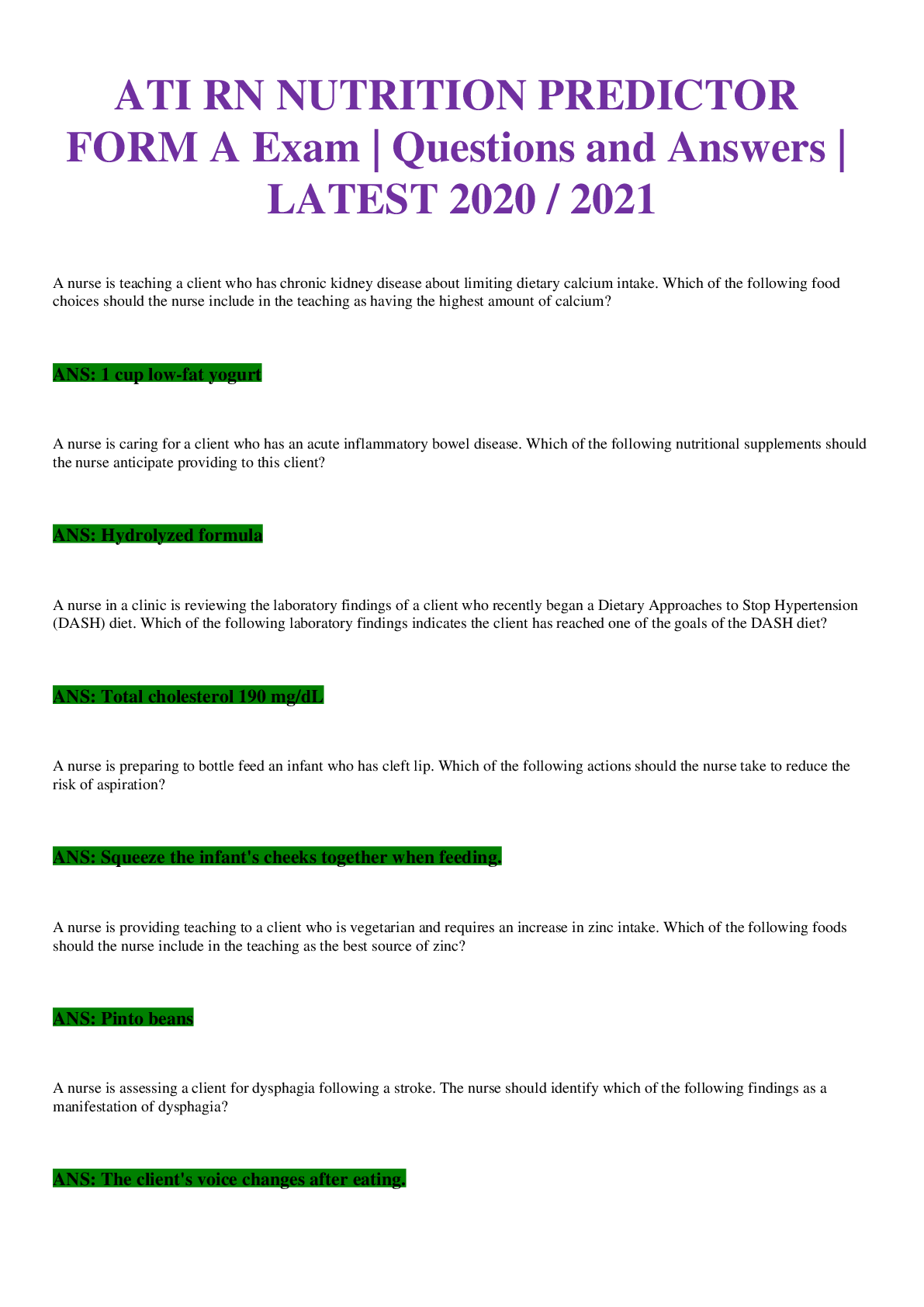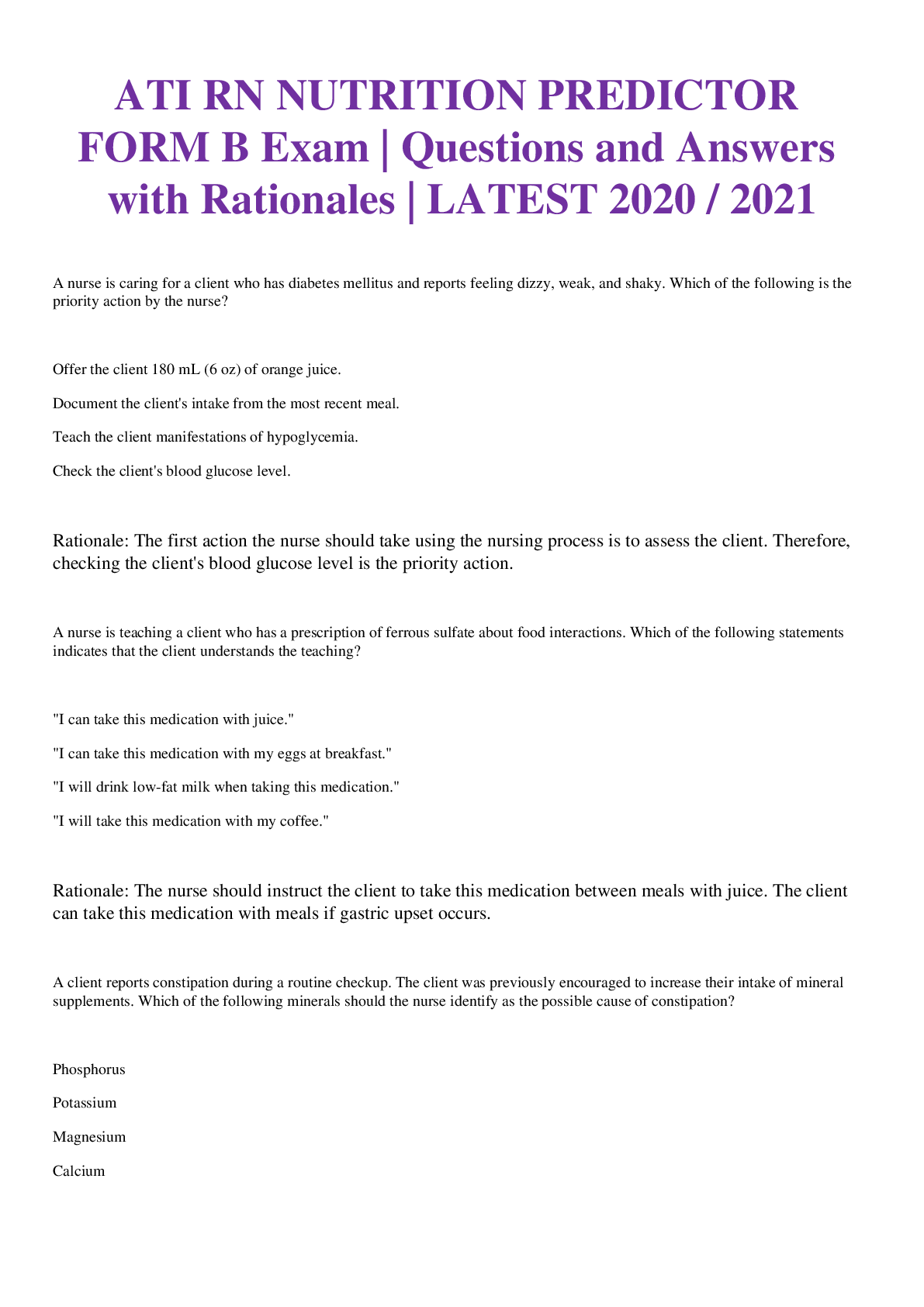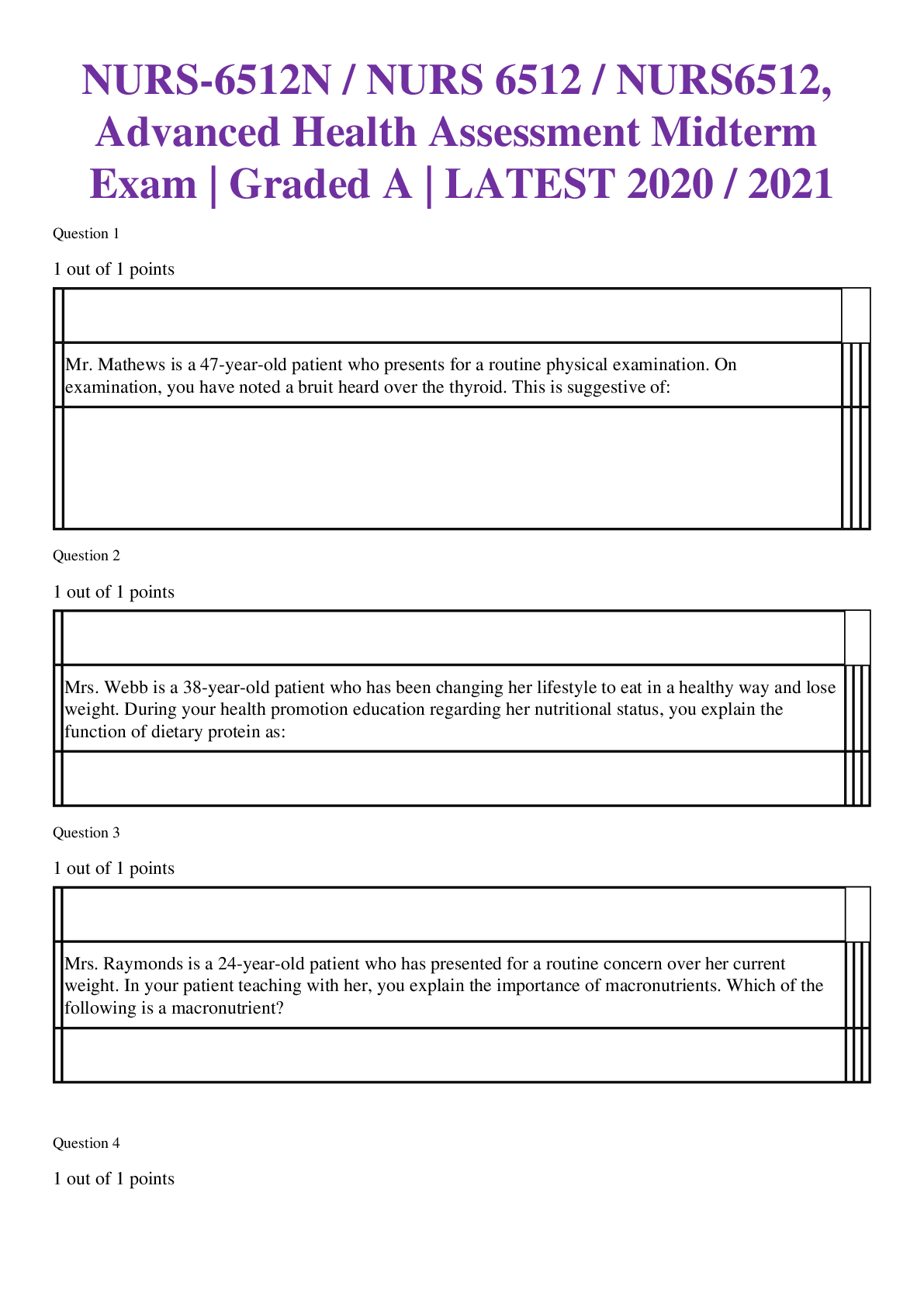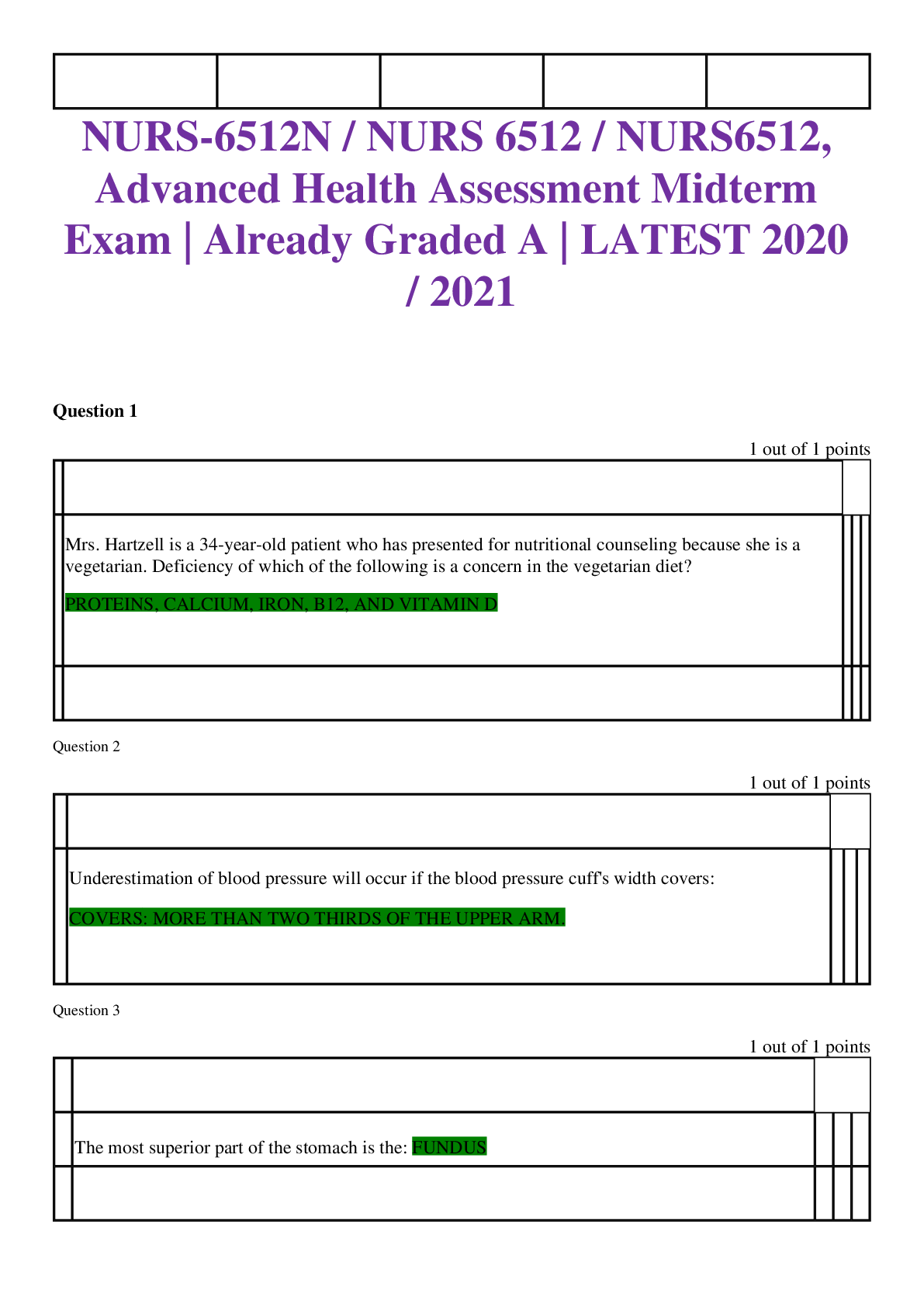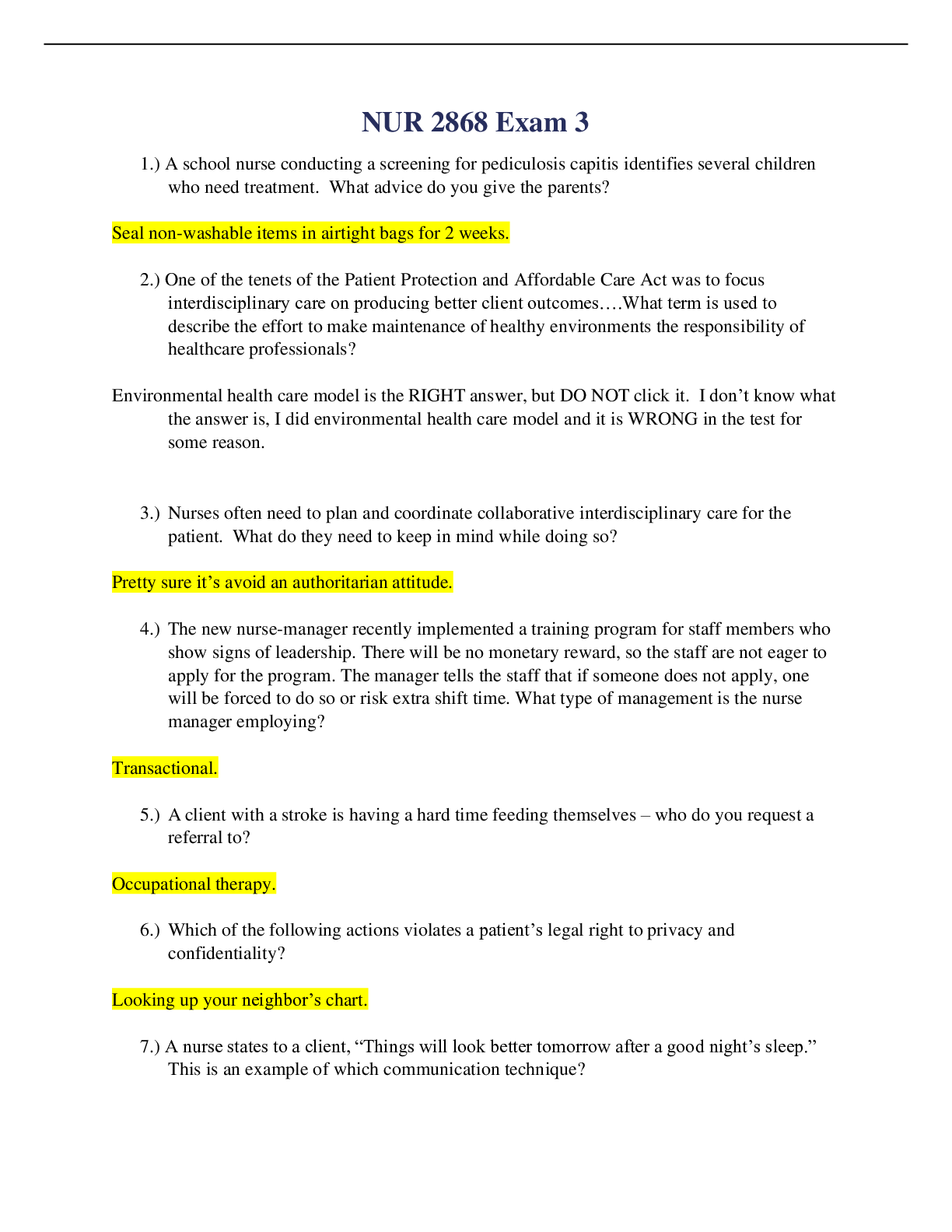*NURSING > EXAM > HESI fundamentals | Questions and Answers with Rationale | Already Rated A | Latest 2021 / 2022 (All)
HESI fundamentals | Questions and Answers with Rationale | Already Rated A | Latest 2021 / 2022
Document Content and Description Below
HESI fundamentals | Questions and Answers with Rationale | Already Rated A | Latest 1. The nurse at a community healthcare center focuses on providing primary preventive care. What is the focus of... primary preventive care? ANS: Promoting health in healthy individuals RATIONALE: Primary prevention precedes disease or dysfunction and is applied to patients considered physically and emotionally healthy. Health education programs, immunizations, and physical and nutritional fitness activities are primary prevention activities. Tertiary preventive care occurs when an individual has a permanent or irreversible disability. The client undergoing rehabilitation is receiving tertiary preventive care. Secondary preventive care focuses on individuals who are experiencing health problems. Secondary preventive care involves treating clients in the early stages of disease. It also focuses on preventing complications from illness. 2. A registered nurse is teaching a nursing student about the concepts that make up a theory. Which point noted by the nursing student needs correction? ANS: concepts consist of interrelated theories. RATIONALE: A theory consists of interrelated concepts. Concepts help describe or label phenomena. Concepts that affect the client system are physiological, psychological, sociocultural, developmental or spiritual. Concepts can be simple or complex and relate to an object or event that comes from individual perceptual experiences 3. Which nursing intervention can be classified under complex physiologic domain according to the Nursing Interventions Classification (NIC) taxonomy? Select all that apply. ANS: 1 Interventions to restore tissue integrity 2 Interventions to optimize neurologic functions 3 Interventions to provide care before, during, and immediately after surgery RATIONALE: Interventions such as restoring tissue integrity, optimizing neurologic functions, and providing care before, during, and immediately after surgery are classified under physiologic domain according to the Nursing Interventions Classification (NIC) taxonomy [1] [2]. Interventions to manage restricted body movements are classified under the simple physiologic domain. Interventions to promote comfort using psychosocial techniques are classified under the behavioral domain. 4. A registered nurse is teaching a nursing student about systems theories with a specific reference to Neuman's systems theory. Which statements made by the nursing student post teaching are accurate? Select all that apply. ANS: 1. Factors that change the environment also affect an open system. 2.The components are interrelated and share a common purpose to form a whole. 3.An open system interacts with the environment, with an exchange of information between the system and the environment. RATIONALE: Factors that change the environment also affect an open system. The components are interrelated and share a common purpose to form a whole. An open system such as a human organism or a process such as the nursing process interacts with the environment, exchanging information between the system and the environment. A system is composed of separate components, and there are two types of system, open or closed. Neuman's systems theory defines a total-person model of holism and an open-systems approach 5. Which intellectual factor would the nurse find appropriate as a dimension for gathering data for a client's health history? ANS: Attention Span RATIONALE: Attention span is an intellectual dimension used to gather data for a health history. A social dimension for gathering health history includes primary language. A coping mechanism is considered to be a social subdimension used to gather a client's health history data. Physical and developmental subdimensions would include activities and coordination 6. What is a stressor? ANS: A stressor is any stimuli that can produce tension and cause instability within the system RATIONALE: A stressor is any stimuli that can produce tension and cause instability within the system. Internal factors exist within the client system, like the physiological and behavioral responses to illnesses. External factors exist outside the client system; these stressors include changes in healthcare policies or increased crime rates. A phenomenon is a term, description, or label given to describe an idea or responses about an event, a situation, a process, a group of events, or a group of situations. 7. Which physical assessment technique involves listening to the sounds of the body? ANS: Auscultation RATIONALE: Auscultation involves listening to the sounds of the body. Palpation involves using the sense of touch to assess and collect data. An inspection involves the nurse carefully looking to collect data. Percussion involves tapping the skin with the fingertips to vibrate underlying tissues and organs 8. A nurse is teaching continuing care assistants about ways to prevent the spread of infection. It would be appropriate for the nurse to emphasize that the cycle of the infectious process must be broken, which is accomplished primarily through what? ANS: Hand-washing RATIONALE: Hand washing before and after providing care is the single most effective means of preventing the spread of infection by breaking the cycle of infection. Although all these interventions are acceptable procedures and may assist in preventing the spread of infection, none are as effective as hand washing. 9. How does the World Health Organization (WHO) define "health"? ANS: A state of complete physical, mental, and social well-being RATIONALE: The WHO defines health as a "state of complete physical, mental, and social well-being, not merely the absence of disease or infirmity." Pender explains that all people free of disease are not healthy. Pender, Murdaugh, and Parsons suggest that for many people, health is a condition of life rather than pathological state. Life conditions such as environment, diet, or lifestyle choices can have positive or negative effects on health long before an illness is evident. Pender, Murdaugh, and Parsons (2011) define health as the actualization of inherent and acquired human potential through goal-directed behavior, competent self-care, and satisfying relationships with others. 10. Which basic human needs belongs to the fourth level as per Maslow's hierarchy of needs? Select all that apply. [Show More]
Last updated: 1 month ago
Preview 1 out of 29 pages
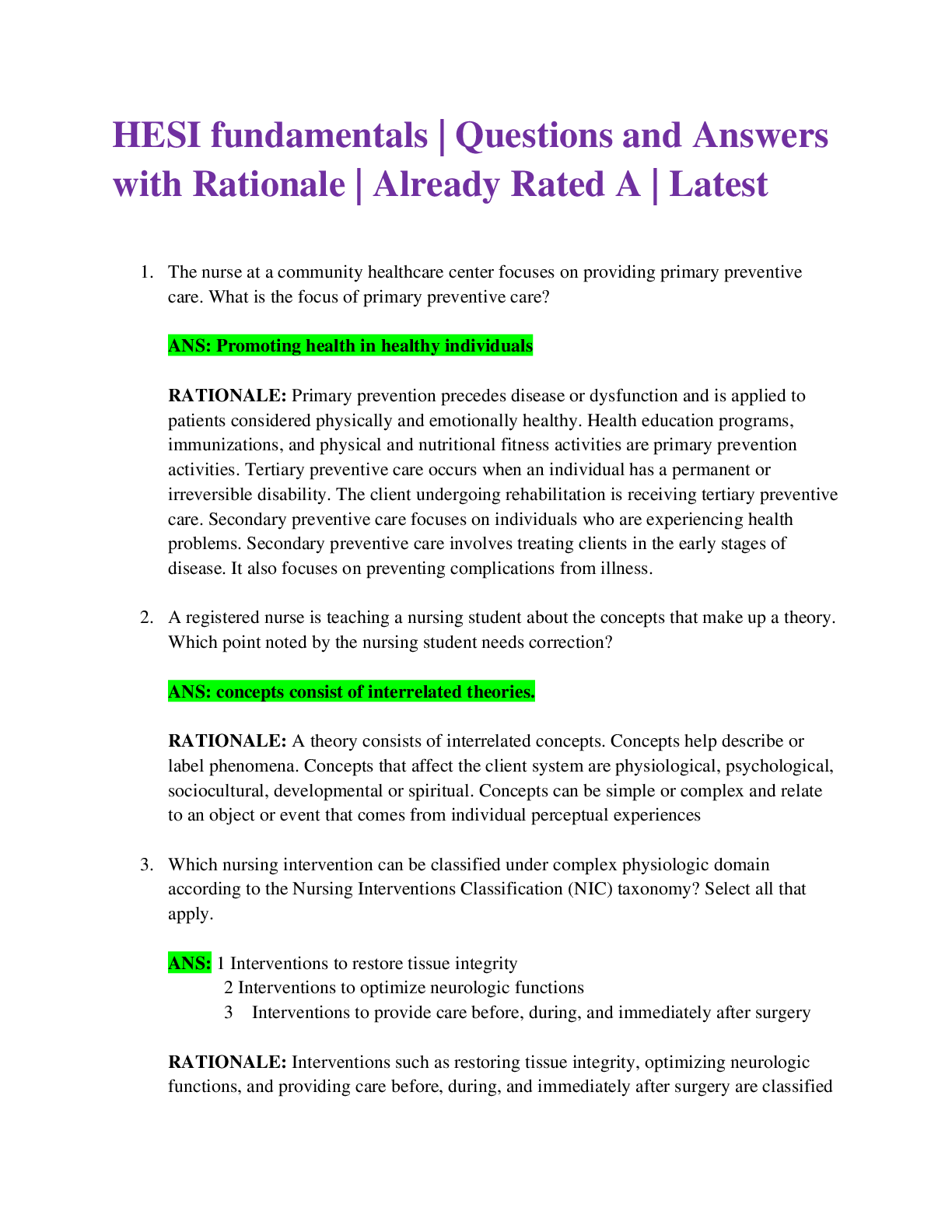
Reviews( 0 )
Document information
Connected school, study & course
About the document
Uploaded On
Apr 21, 2021
Number of pages
29
Written in
Additional information
This document has been written for:
Uploaded
Apr 21, 2021
Downloads
0
Views
79

